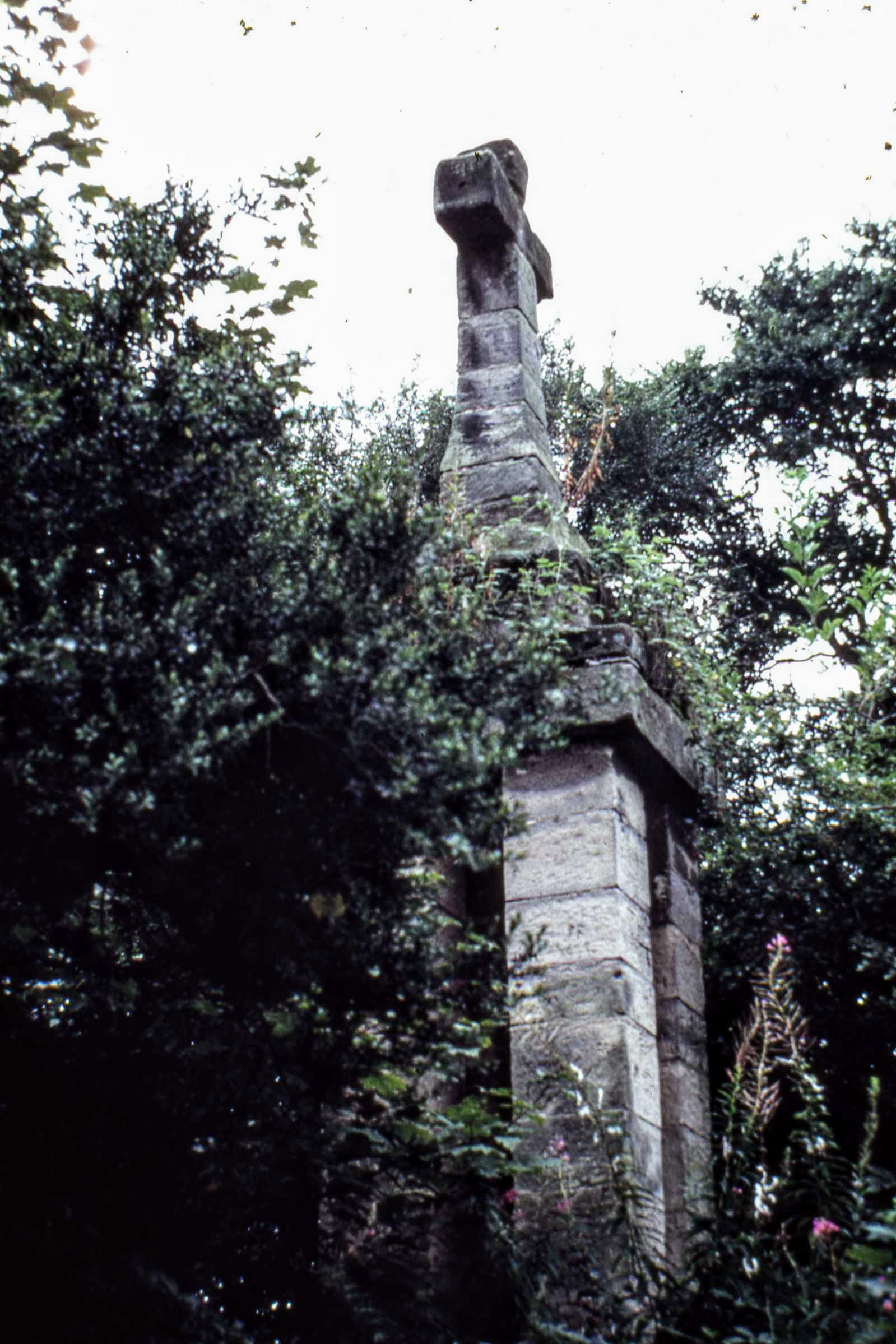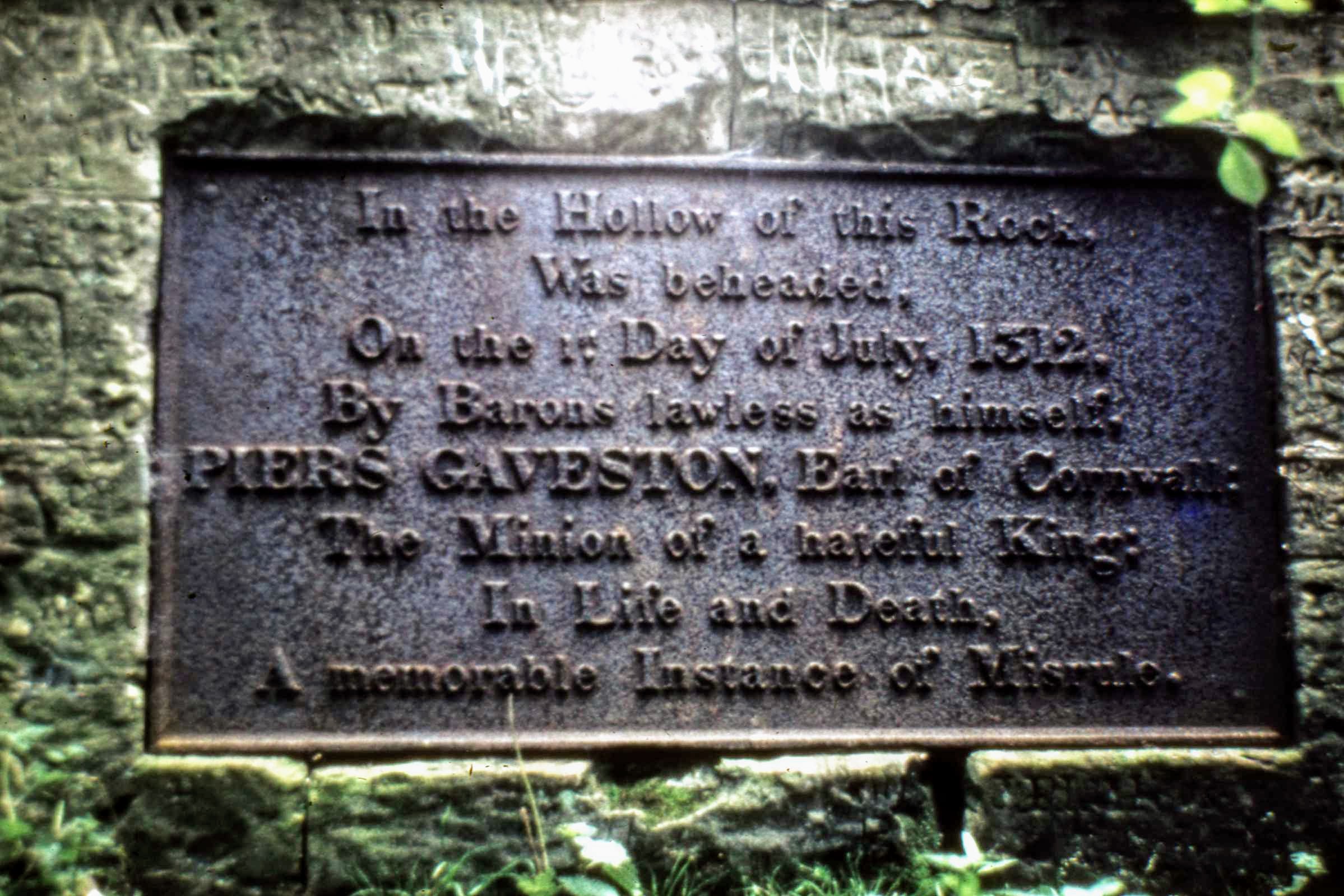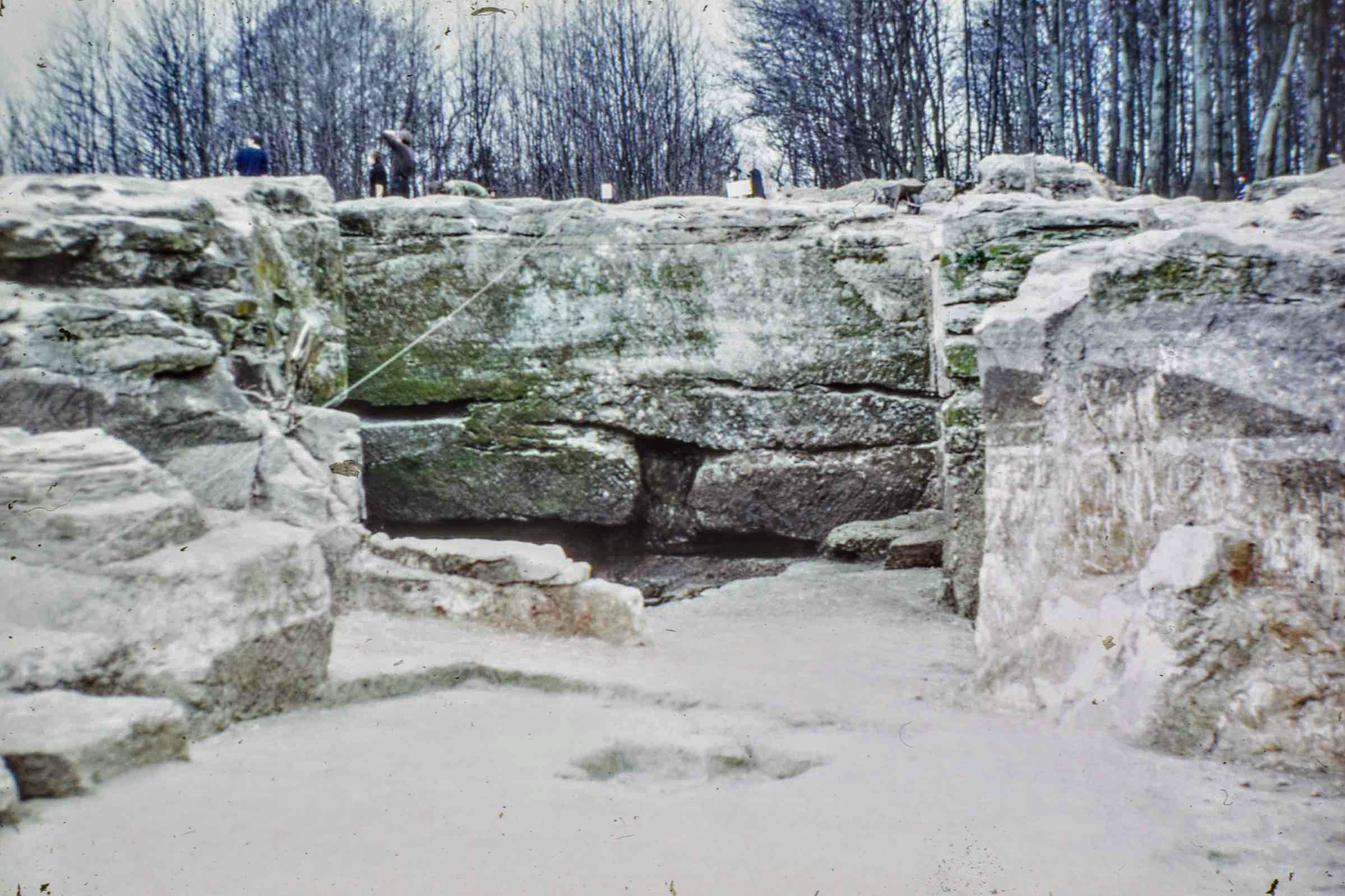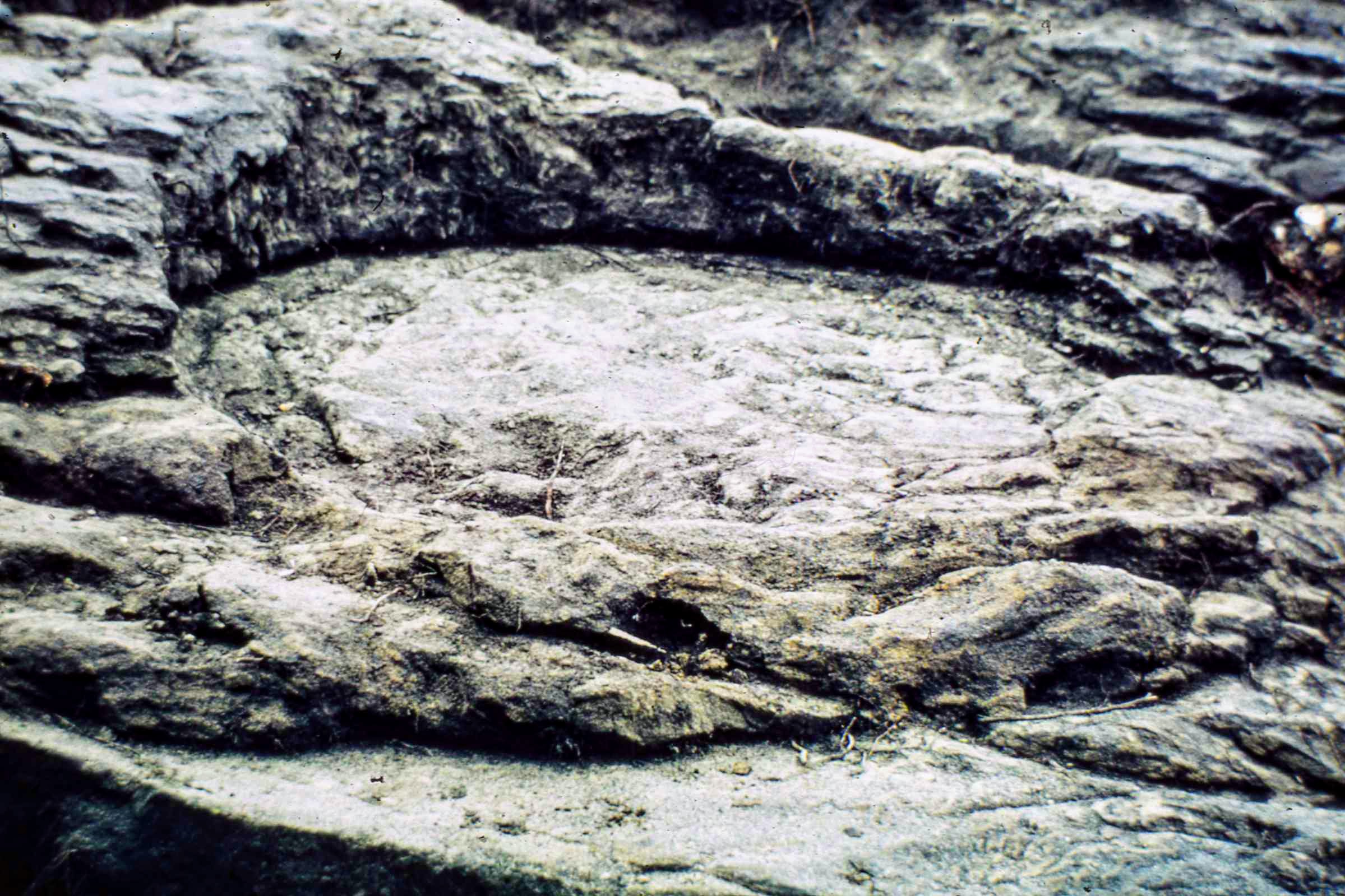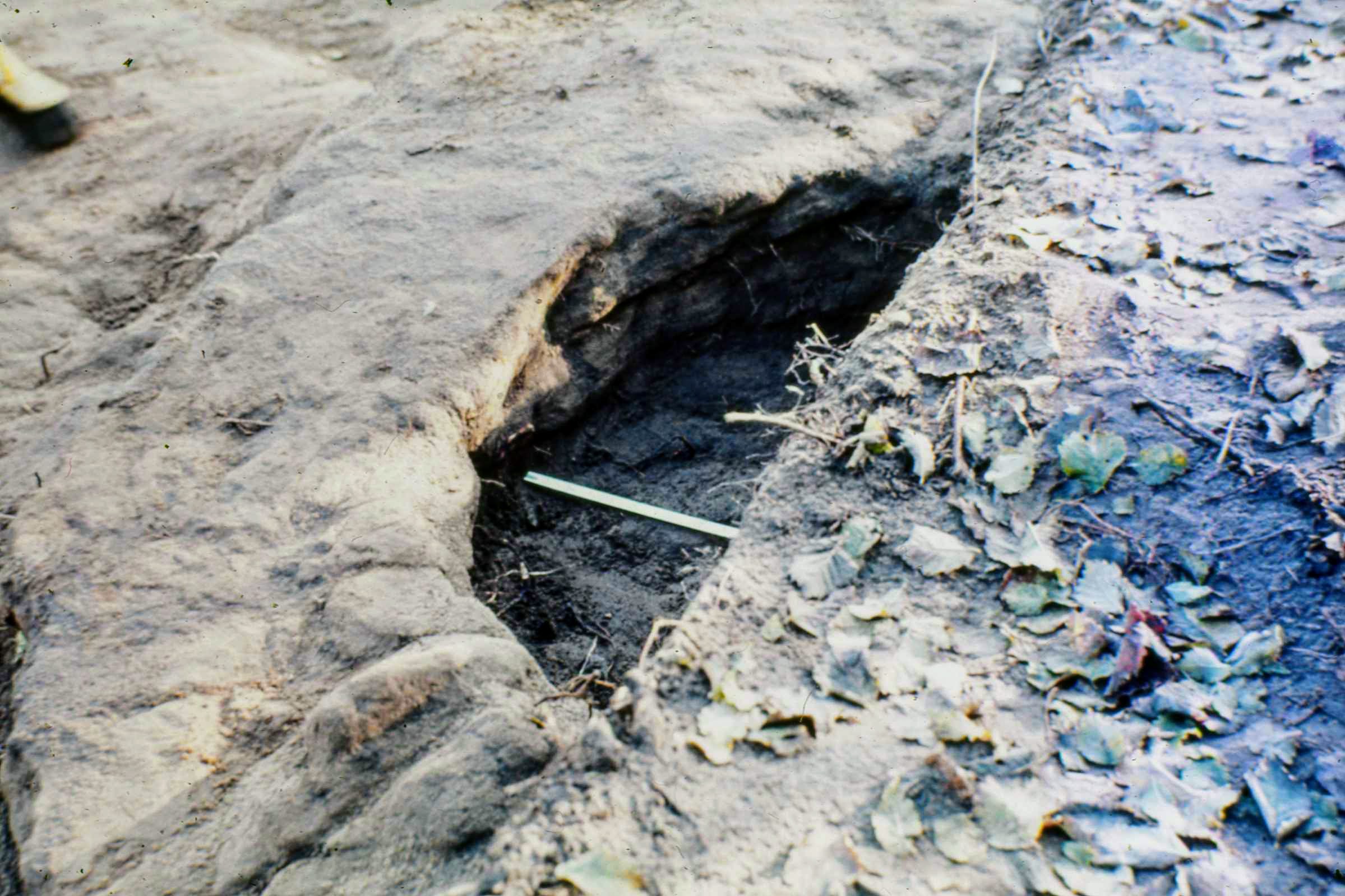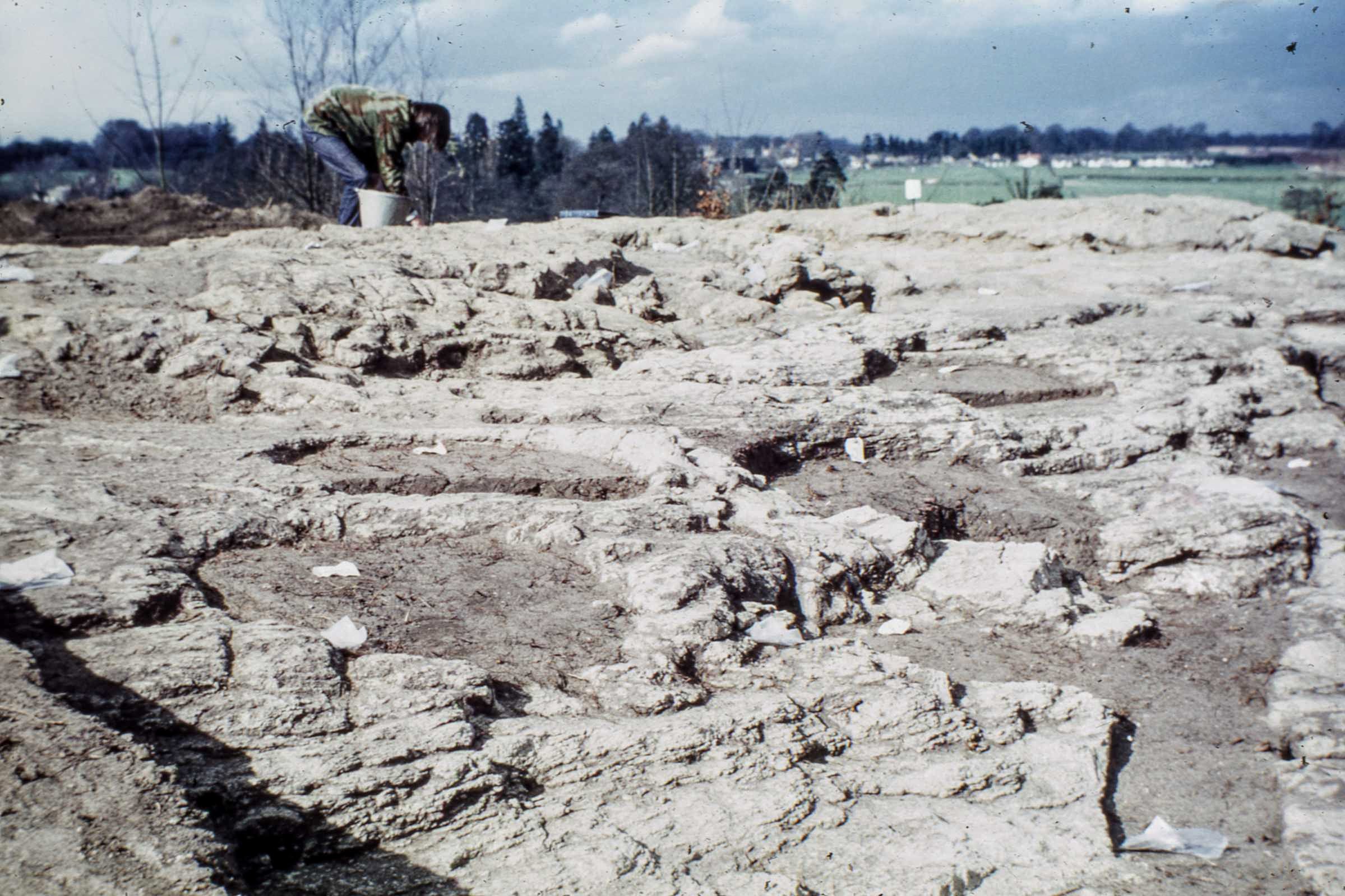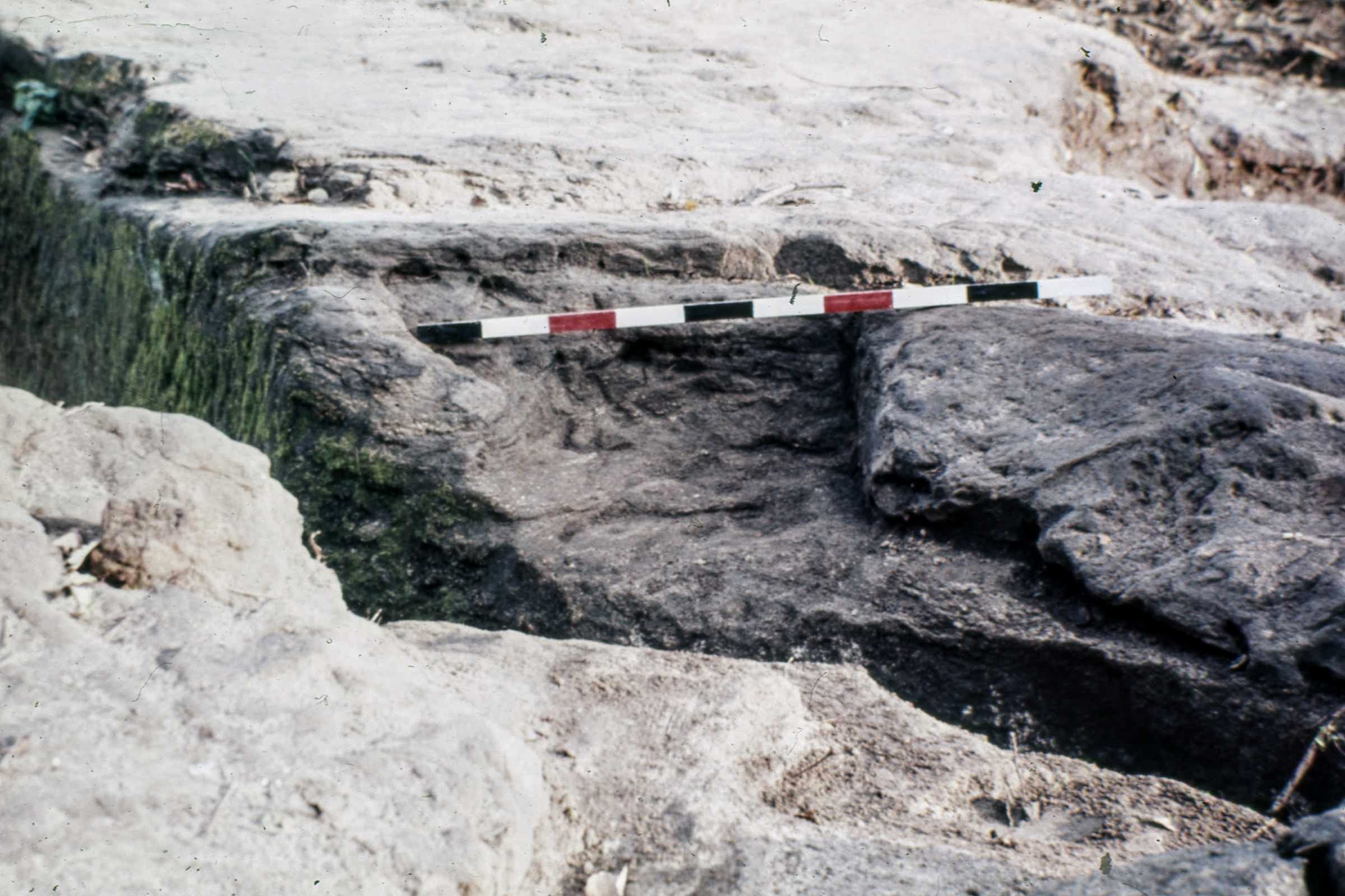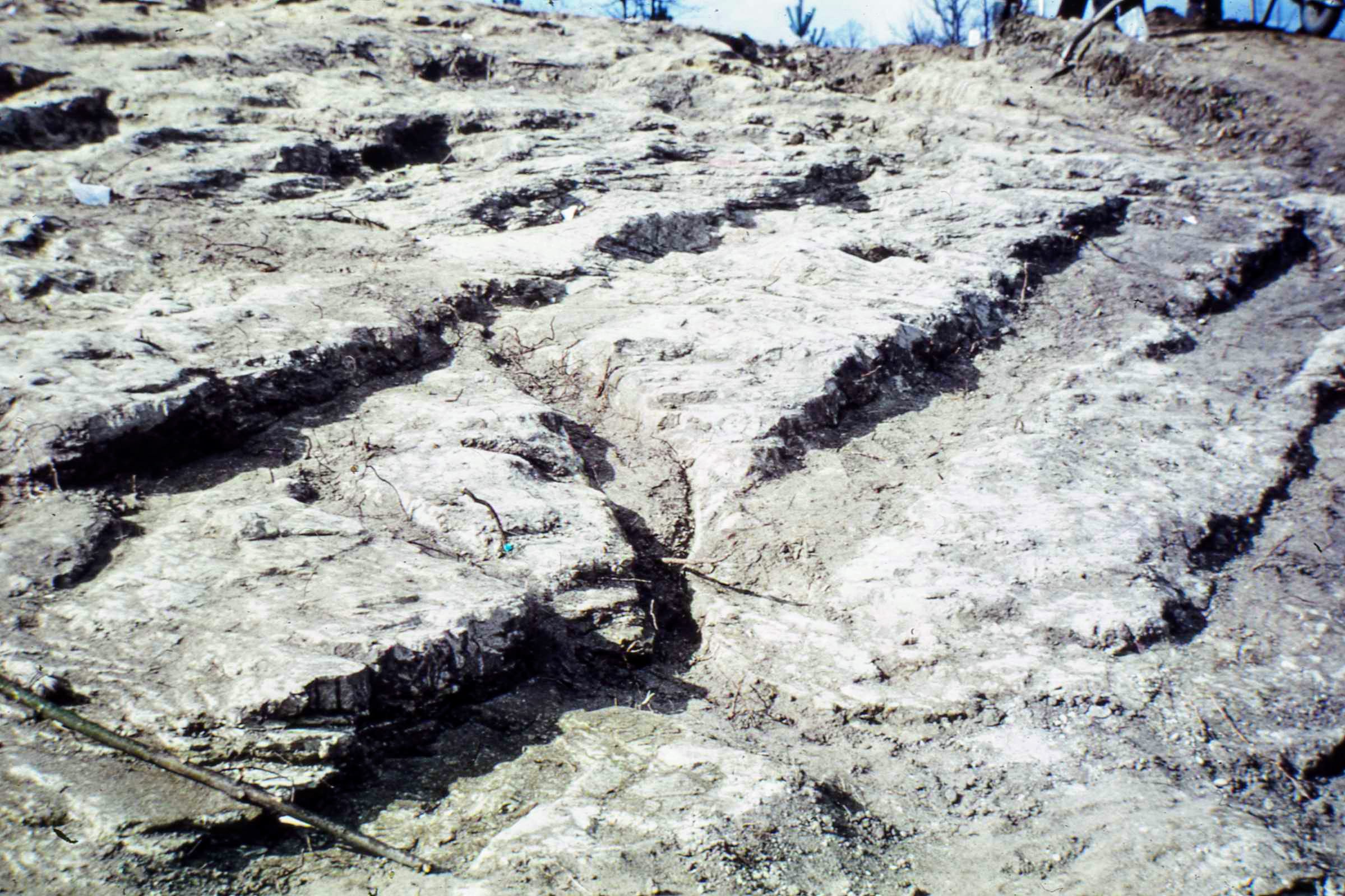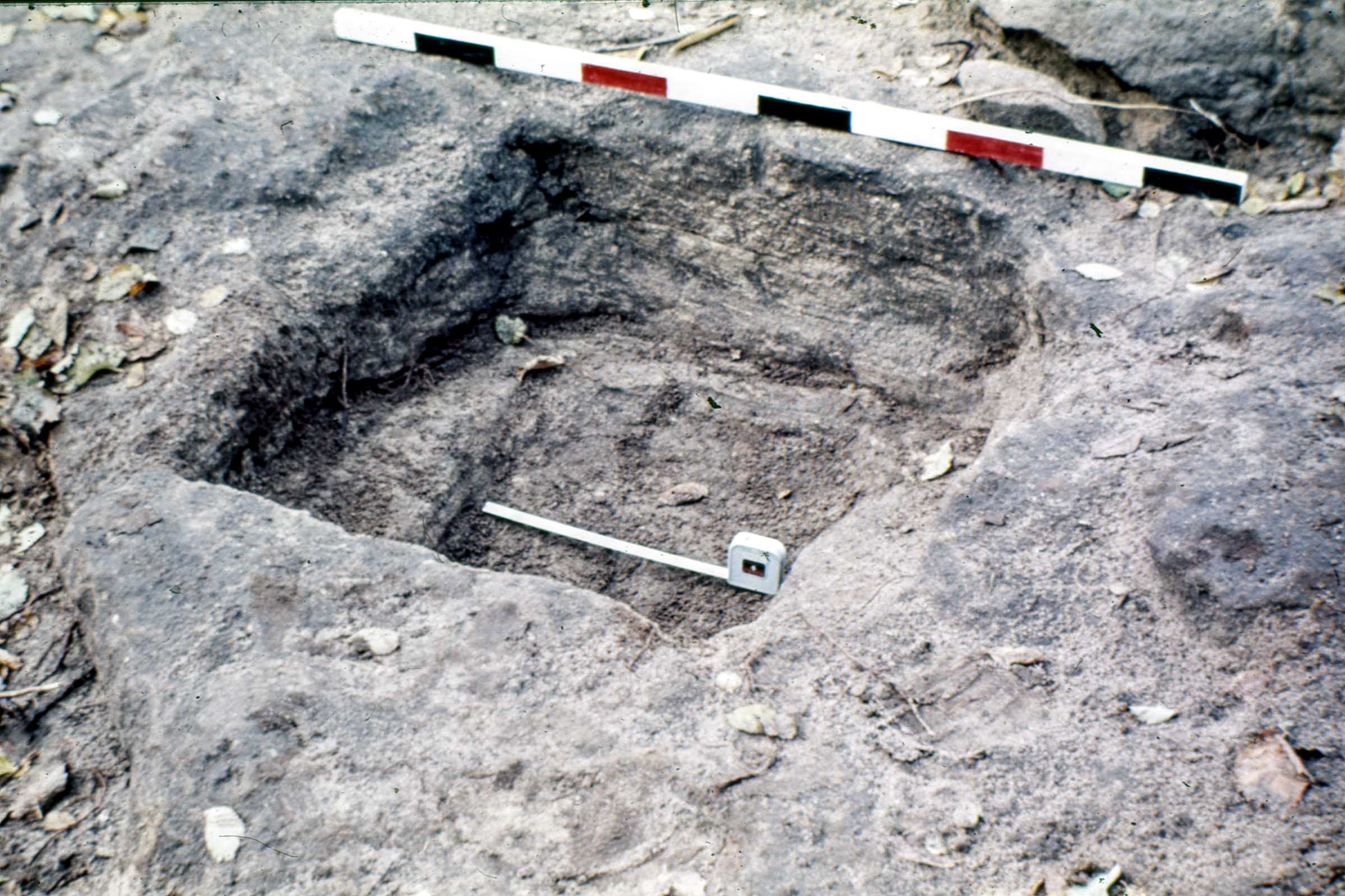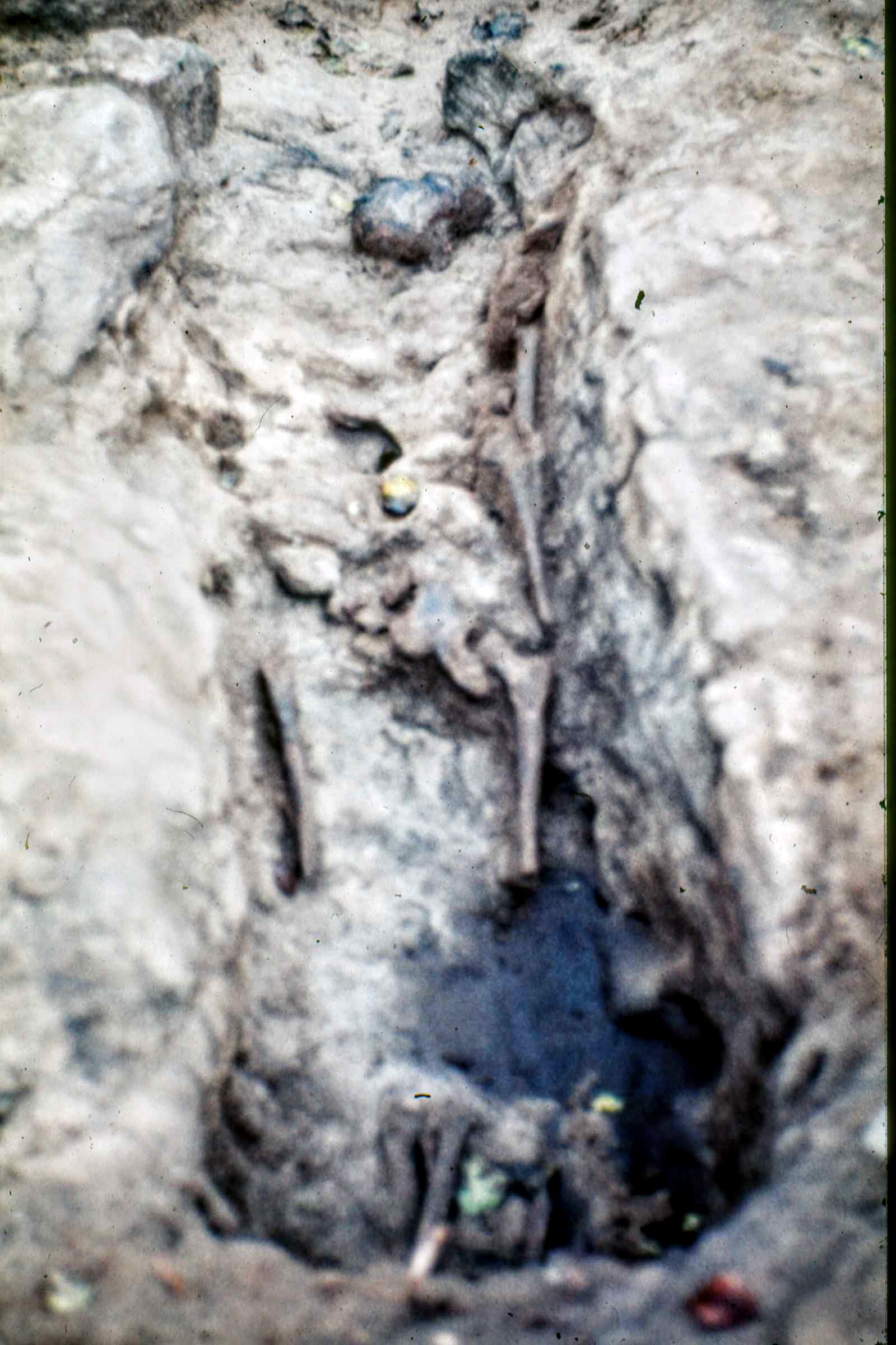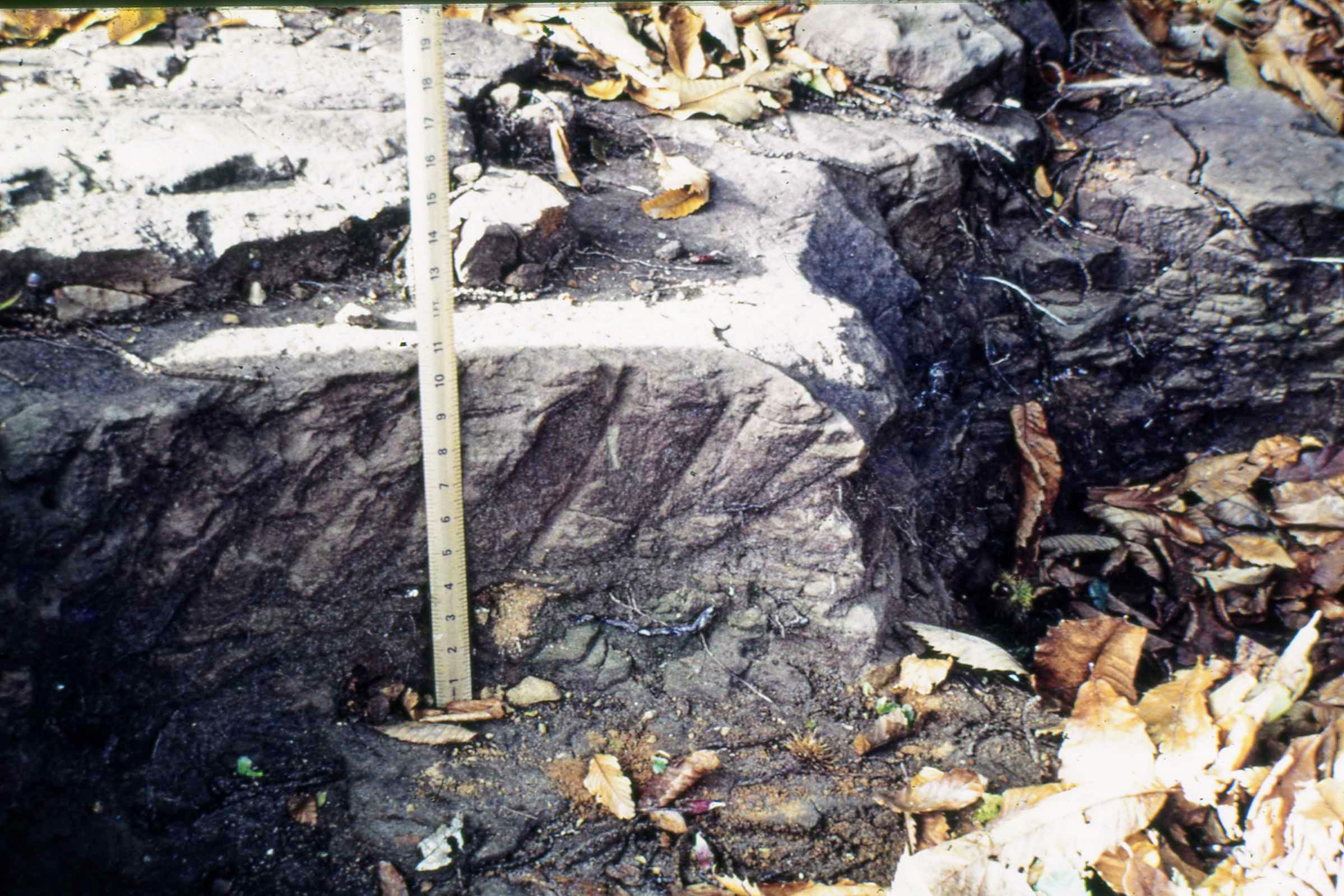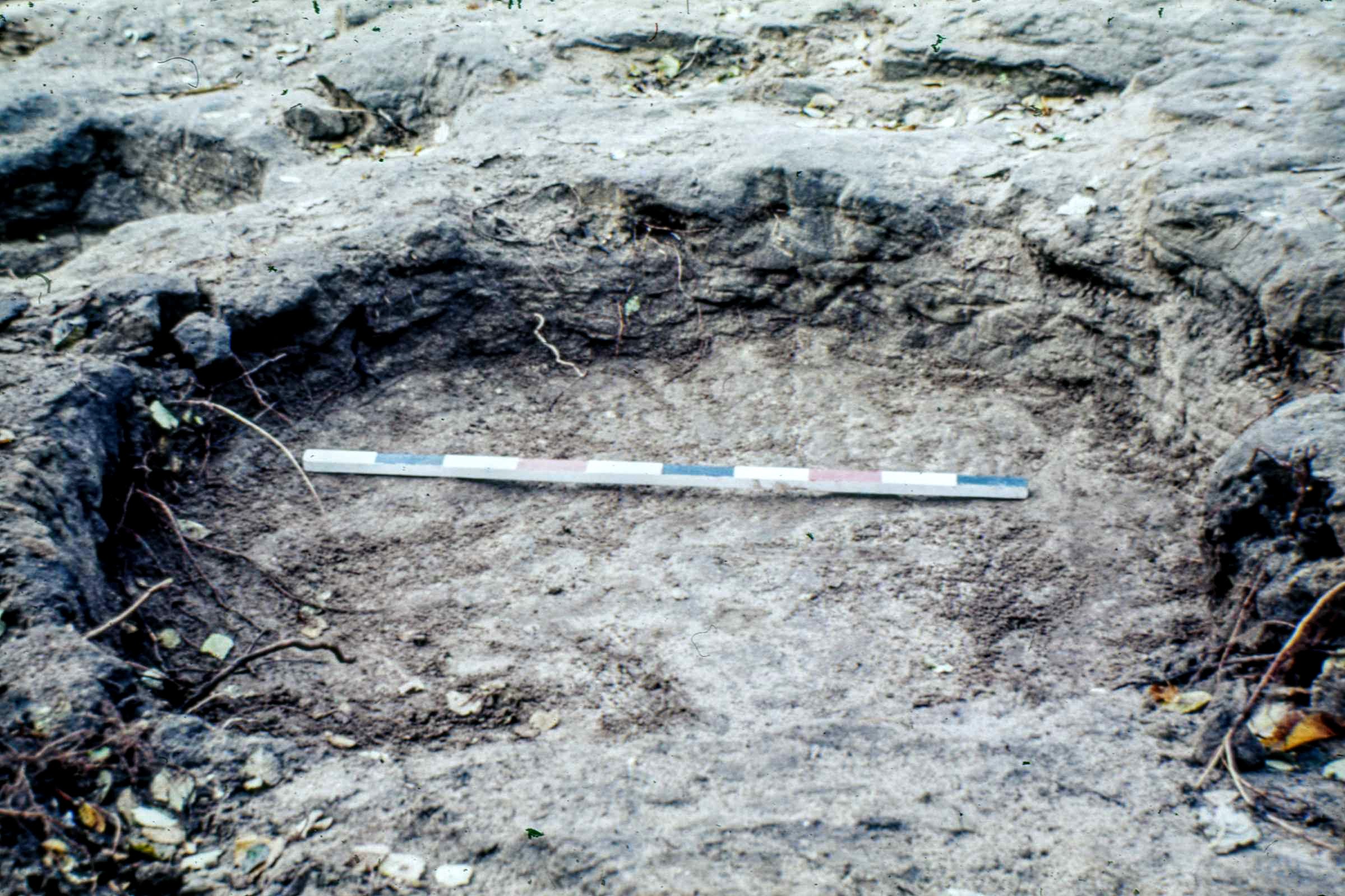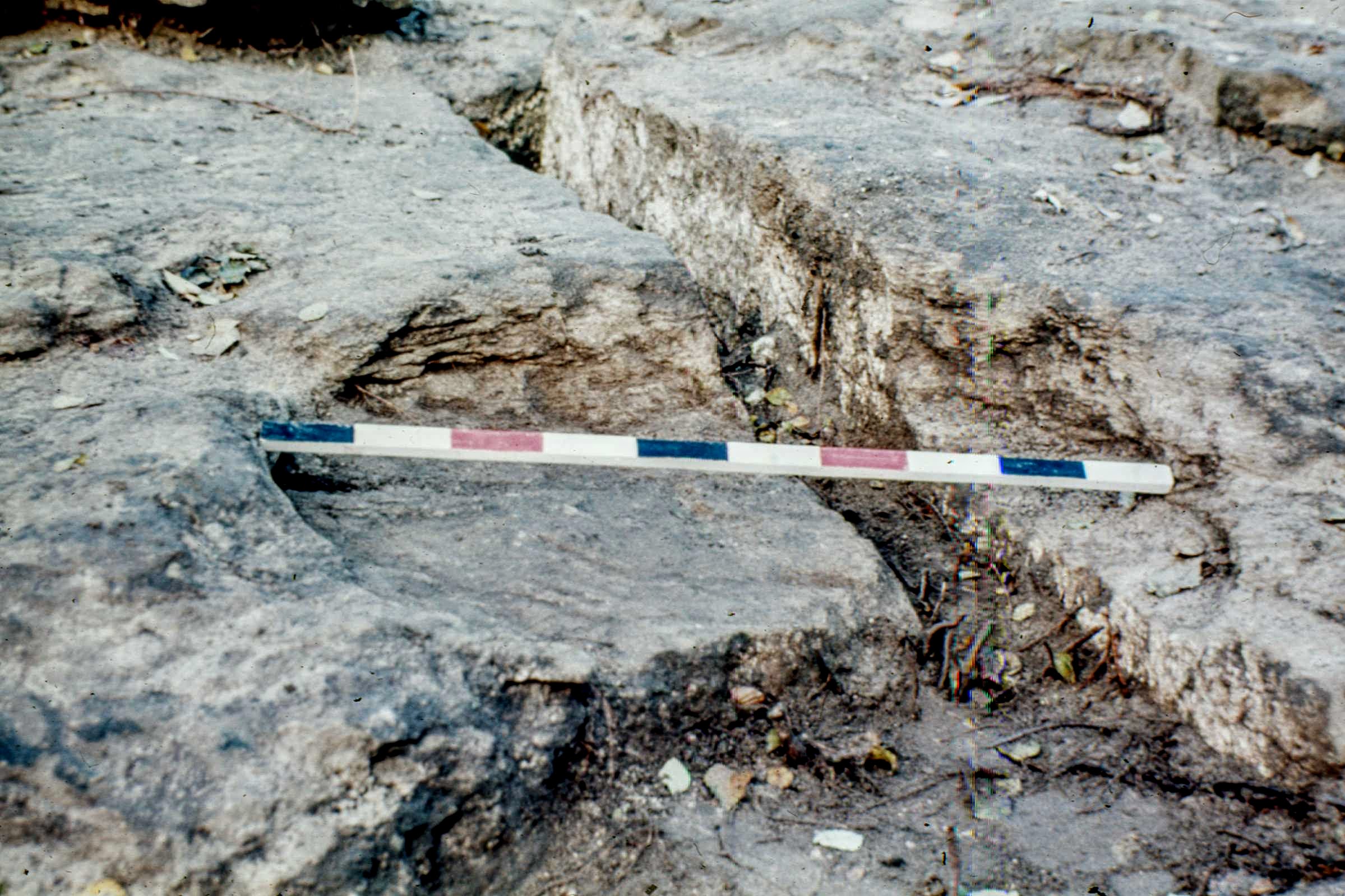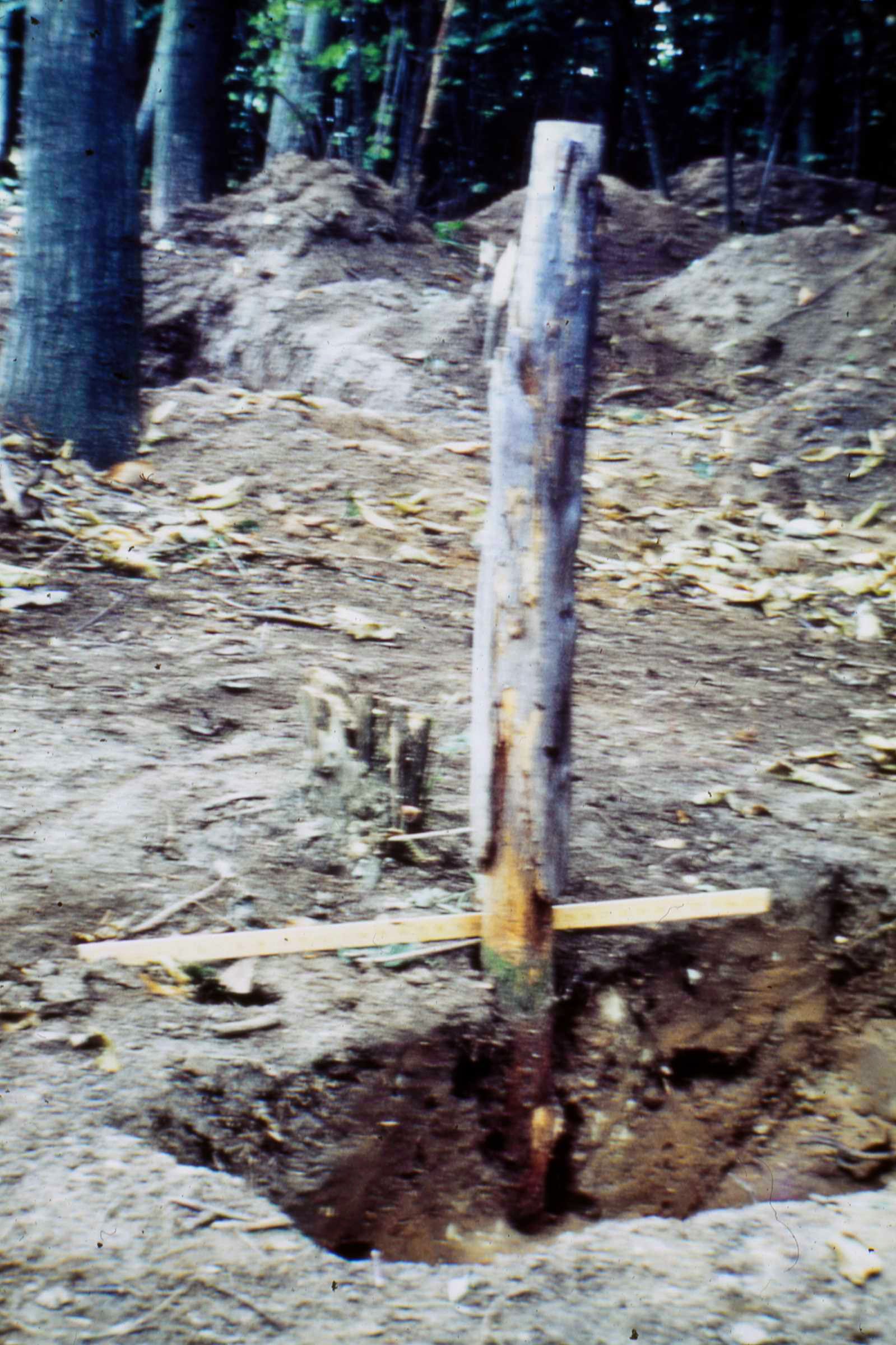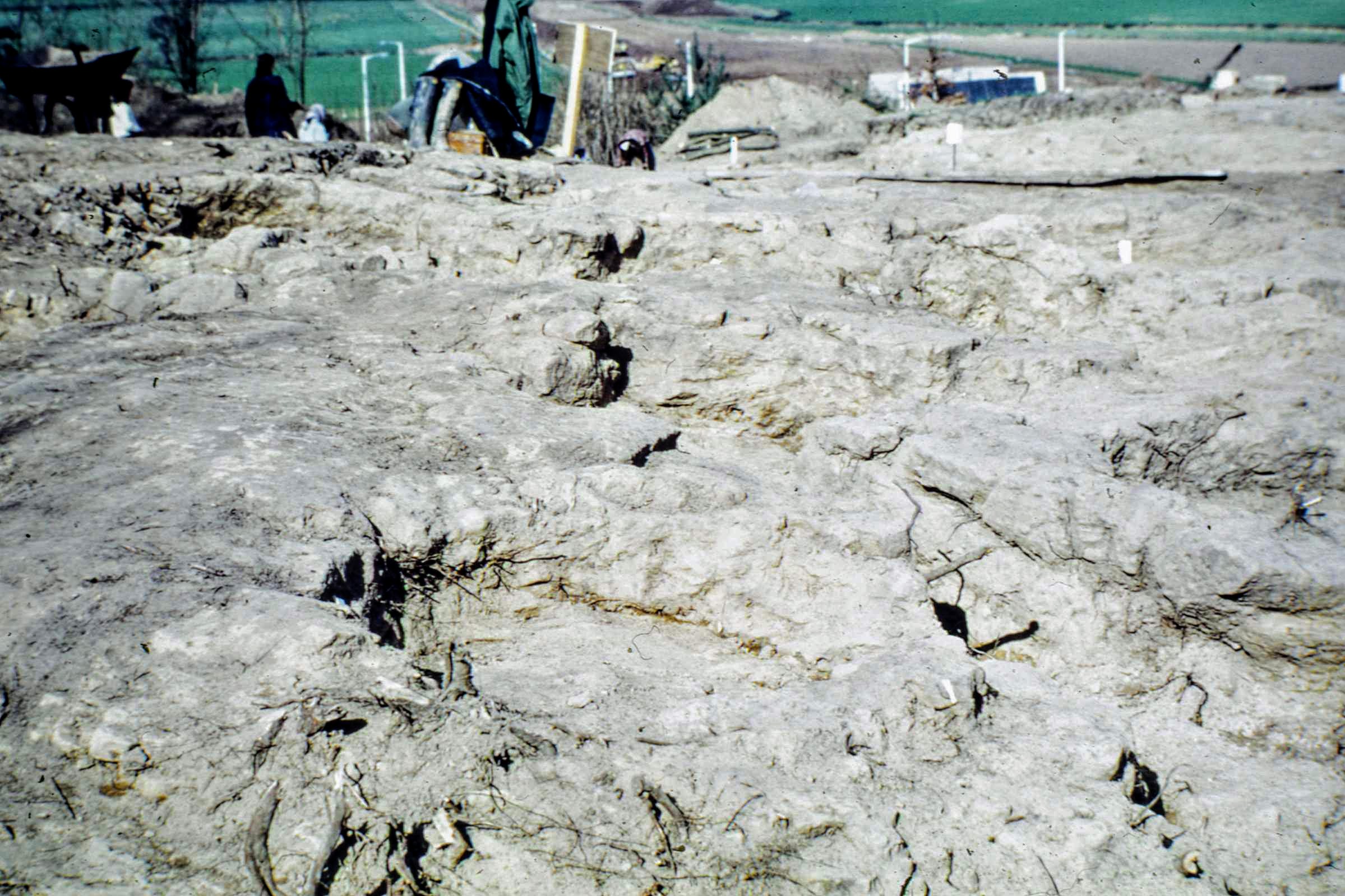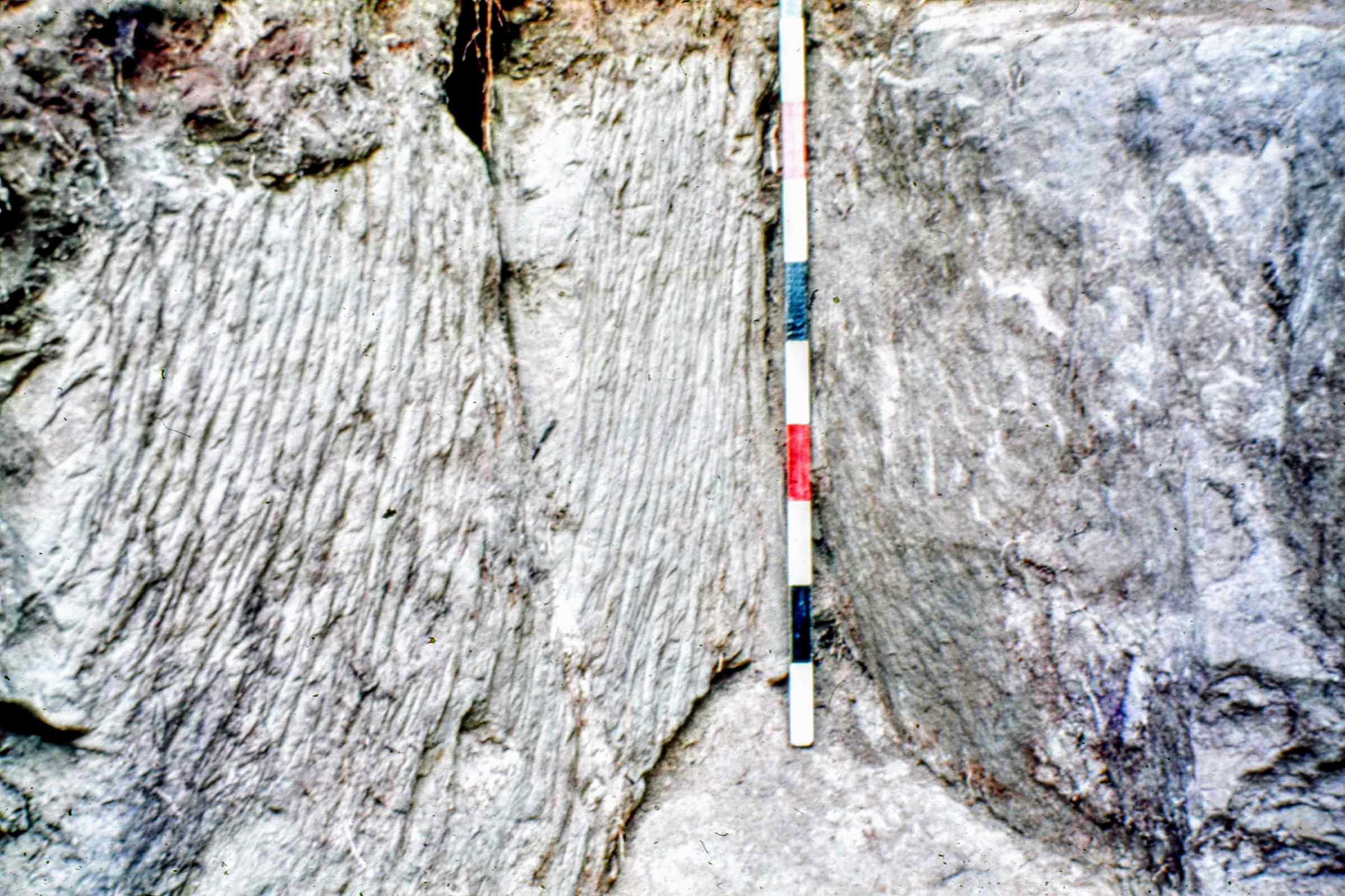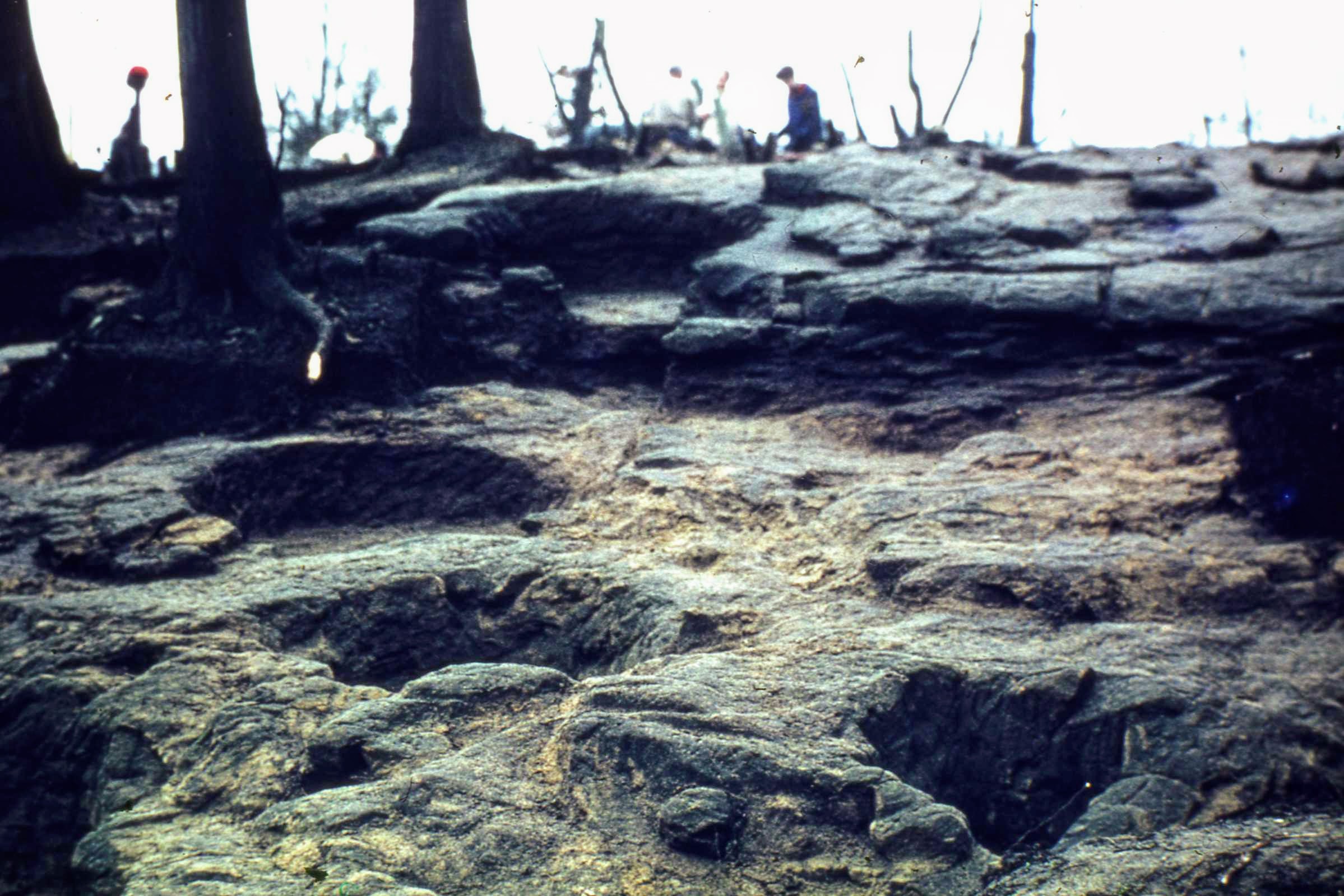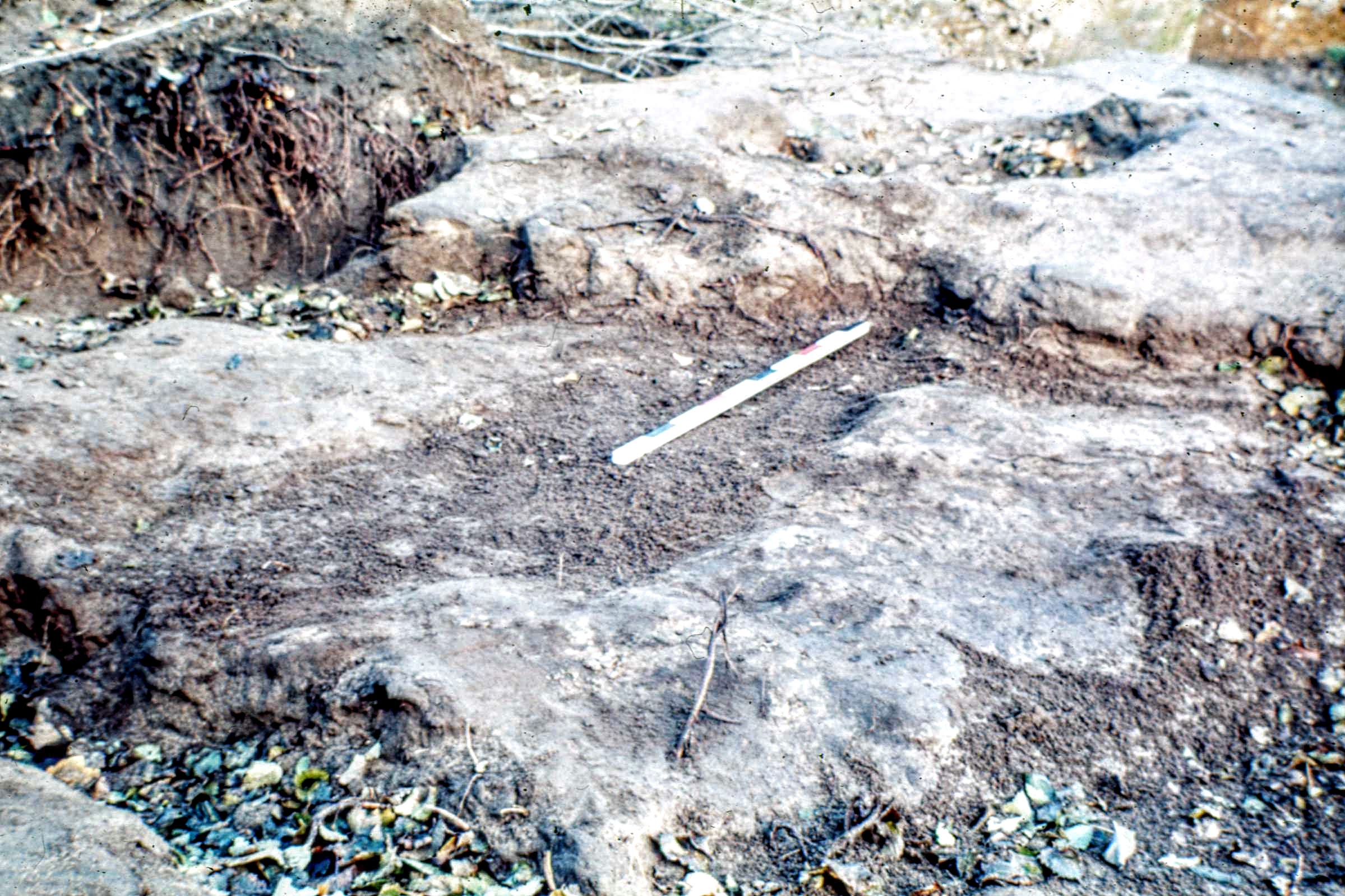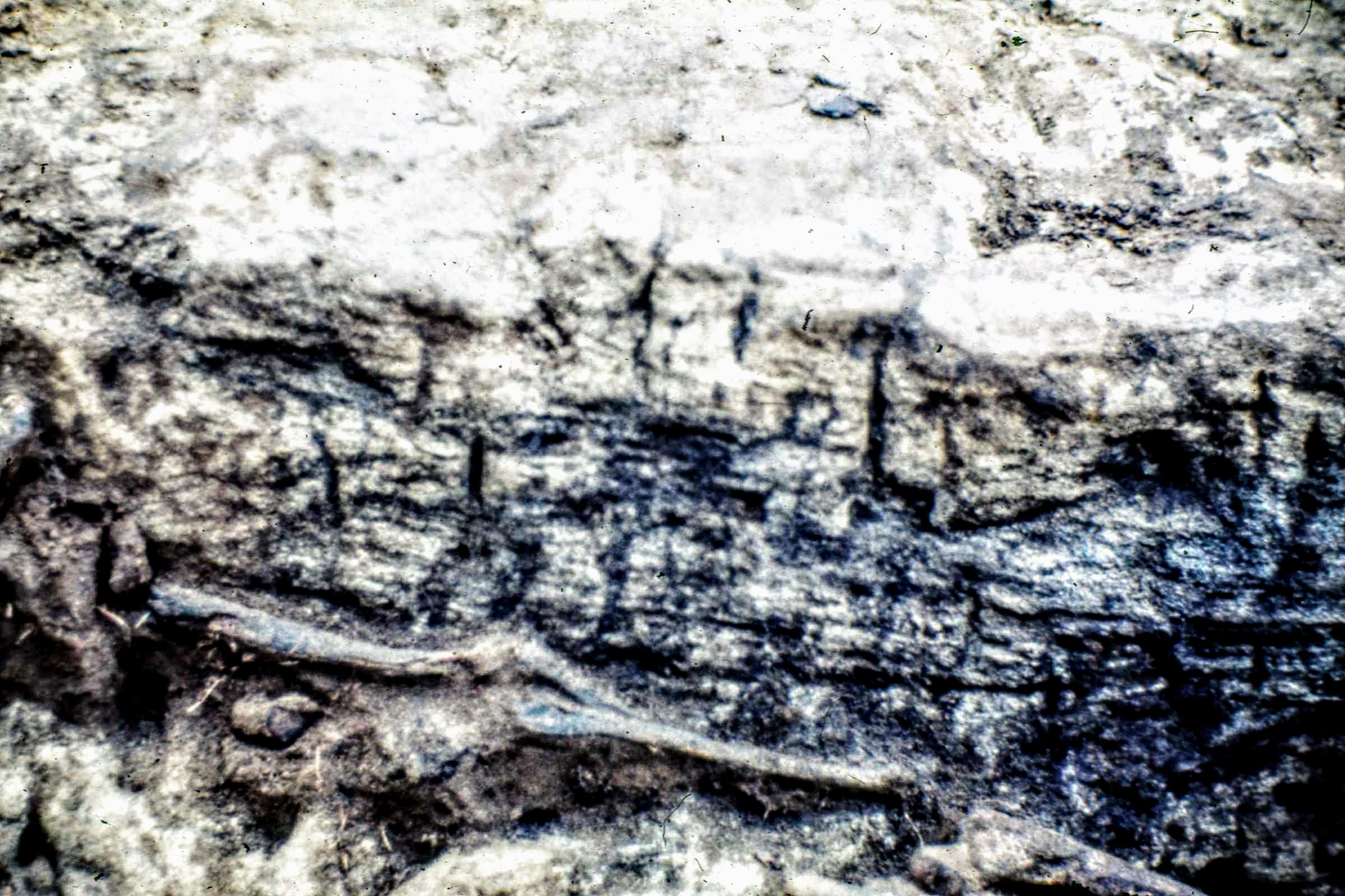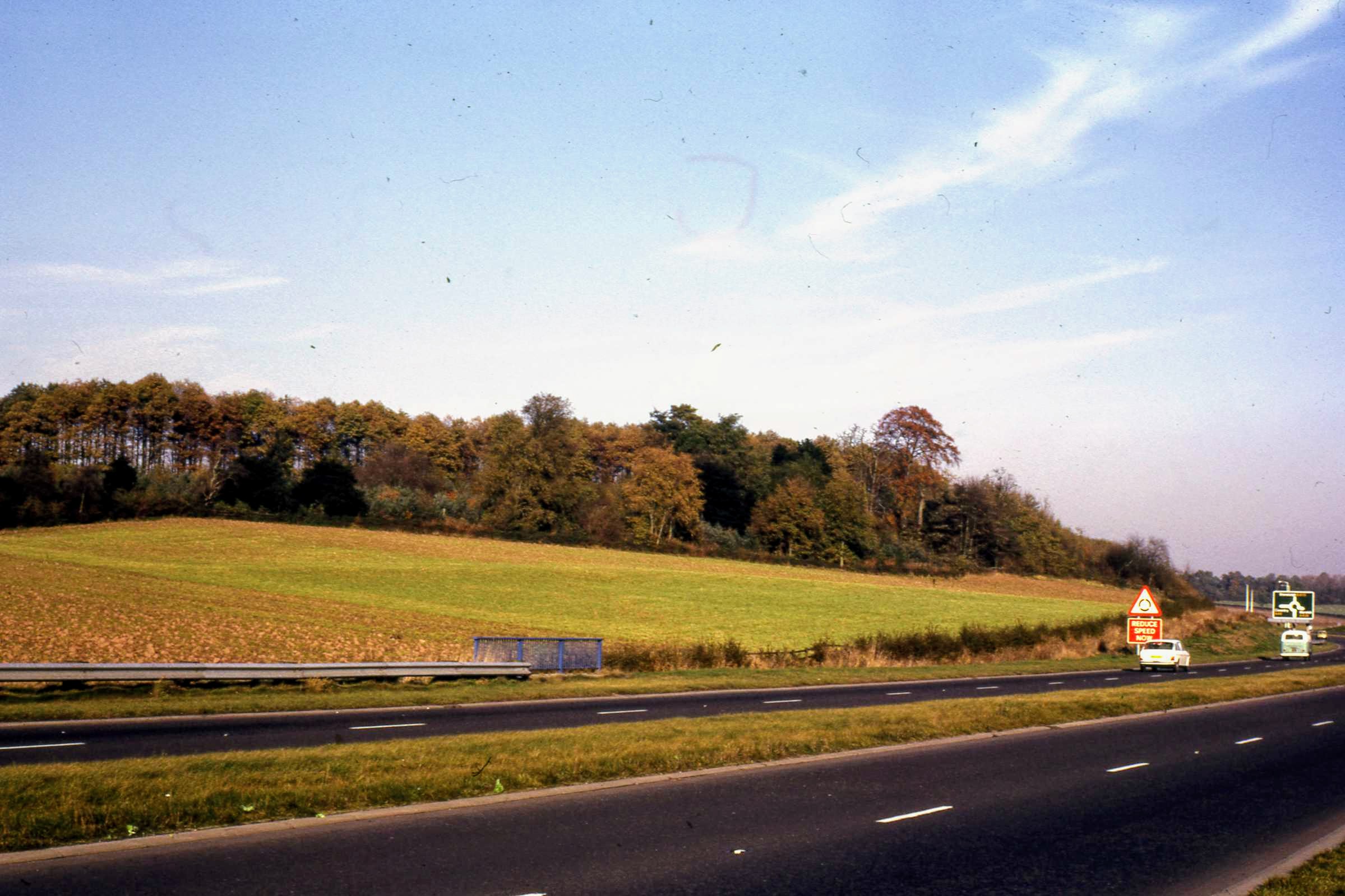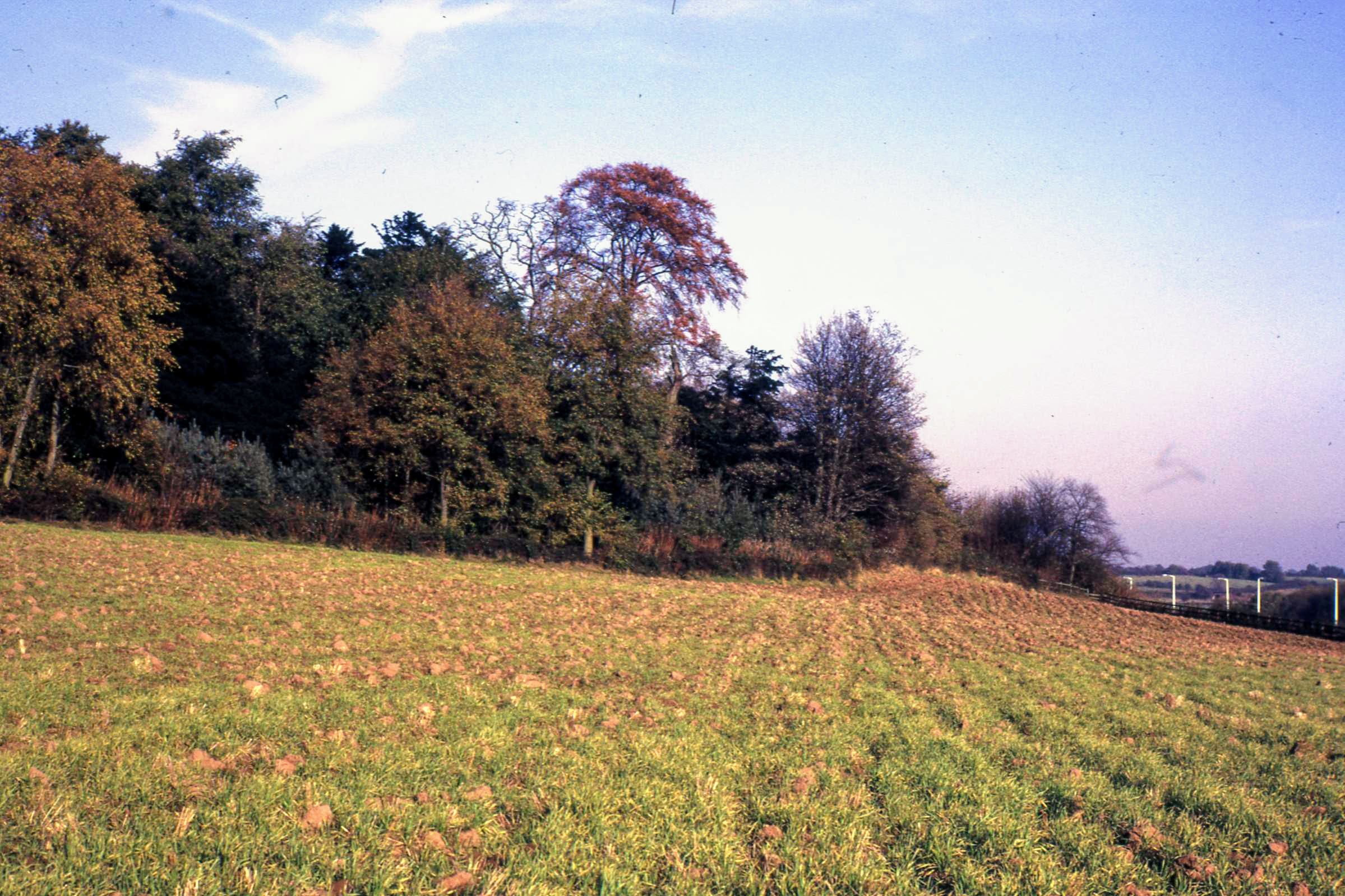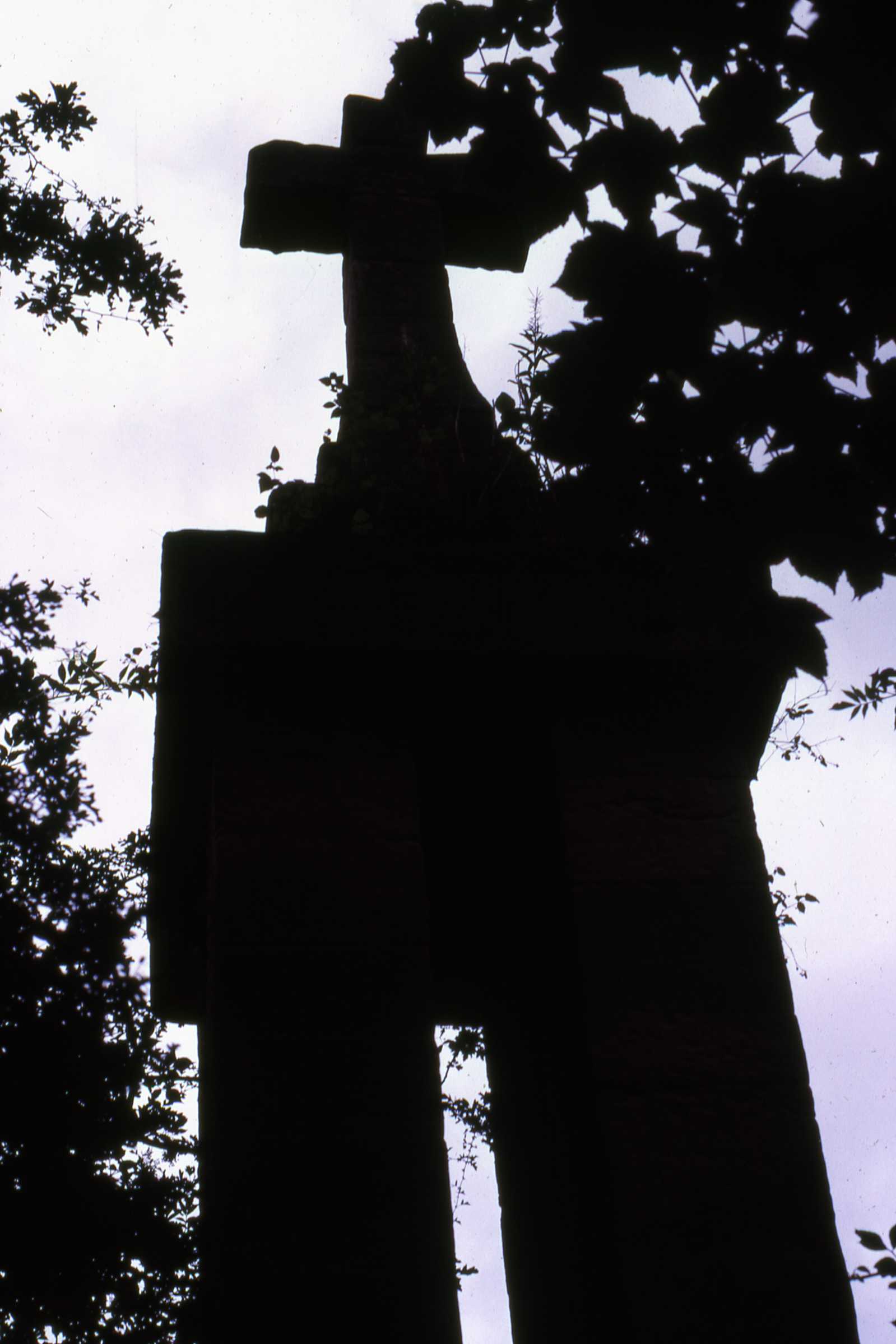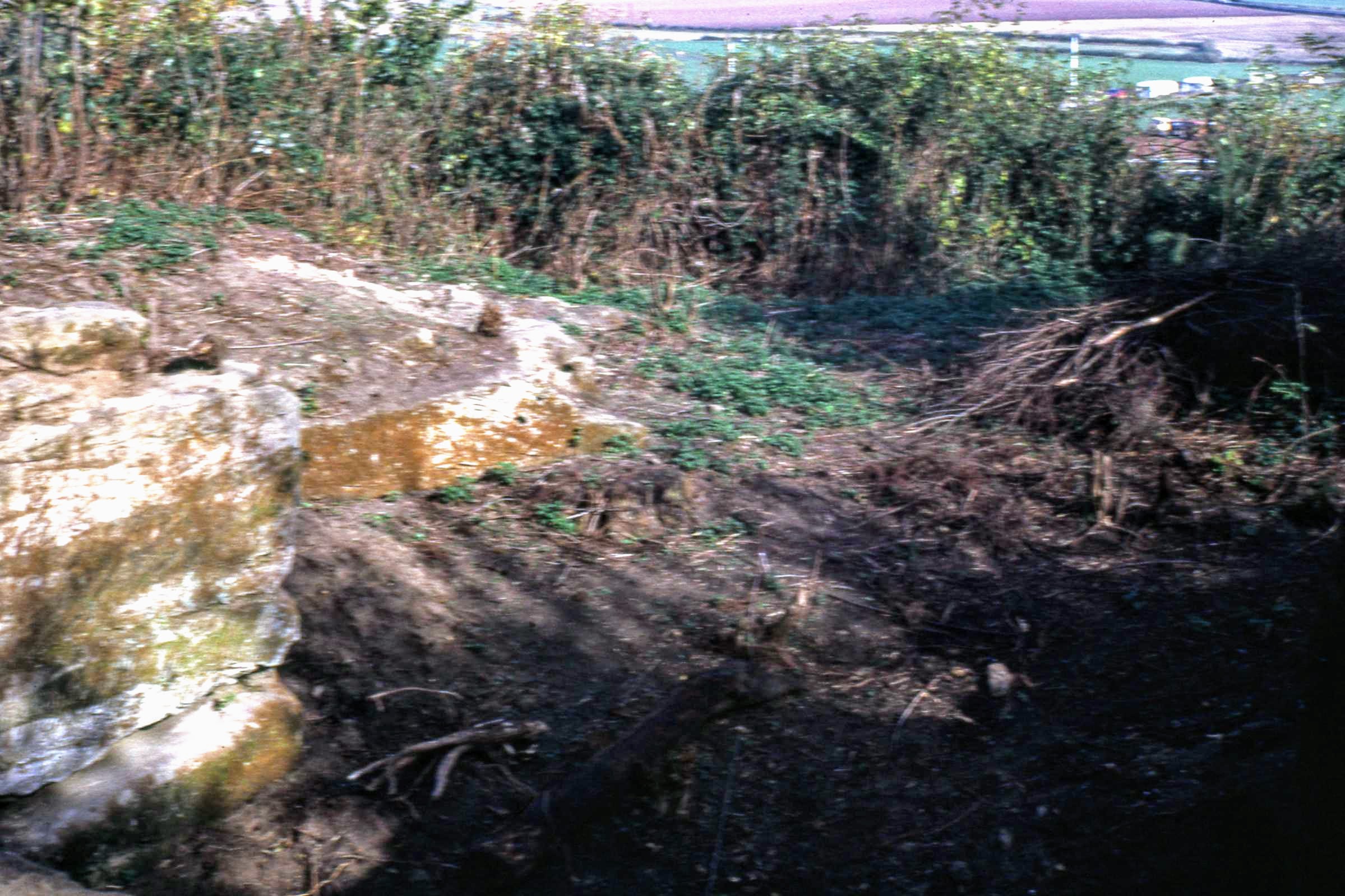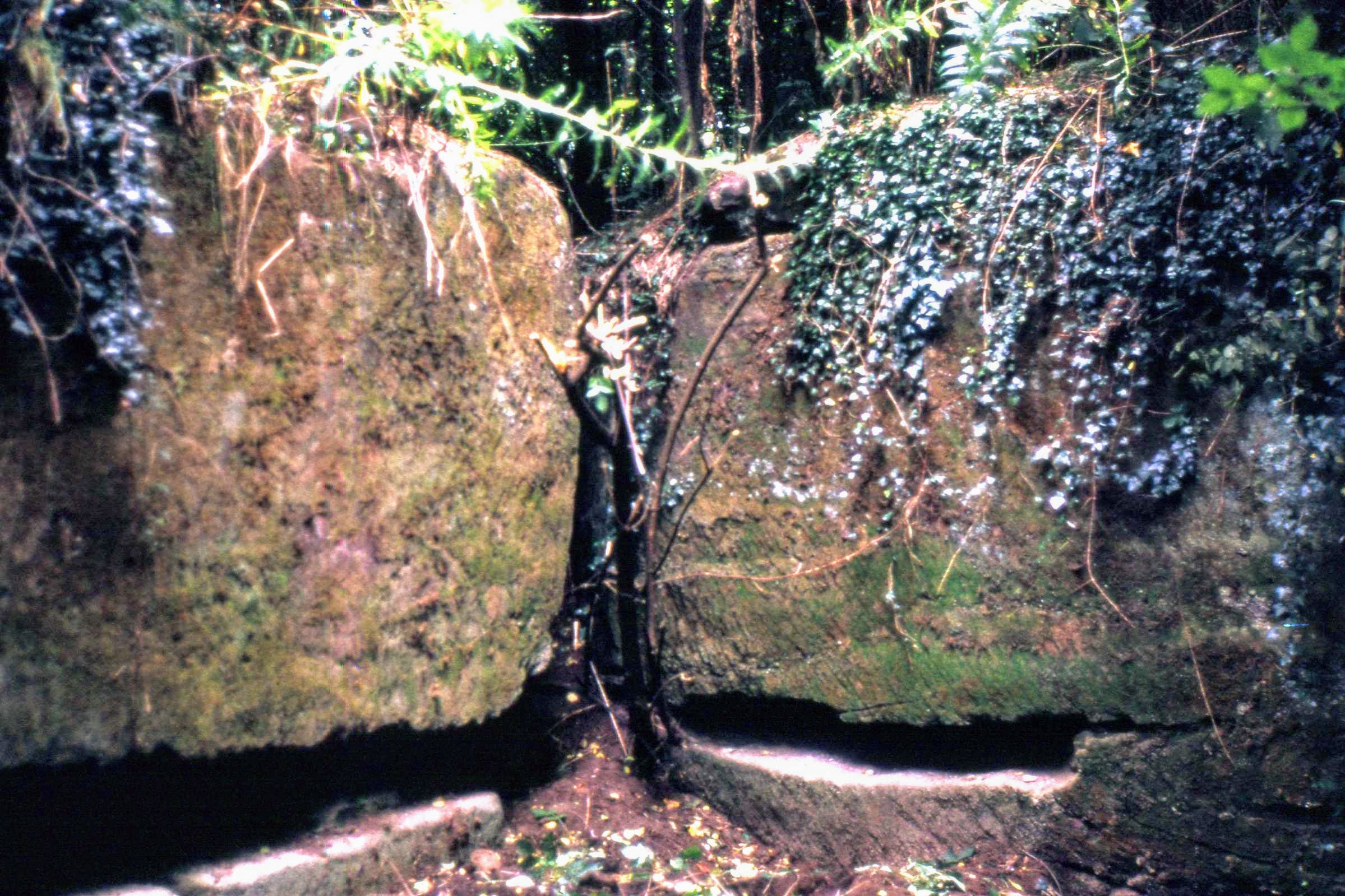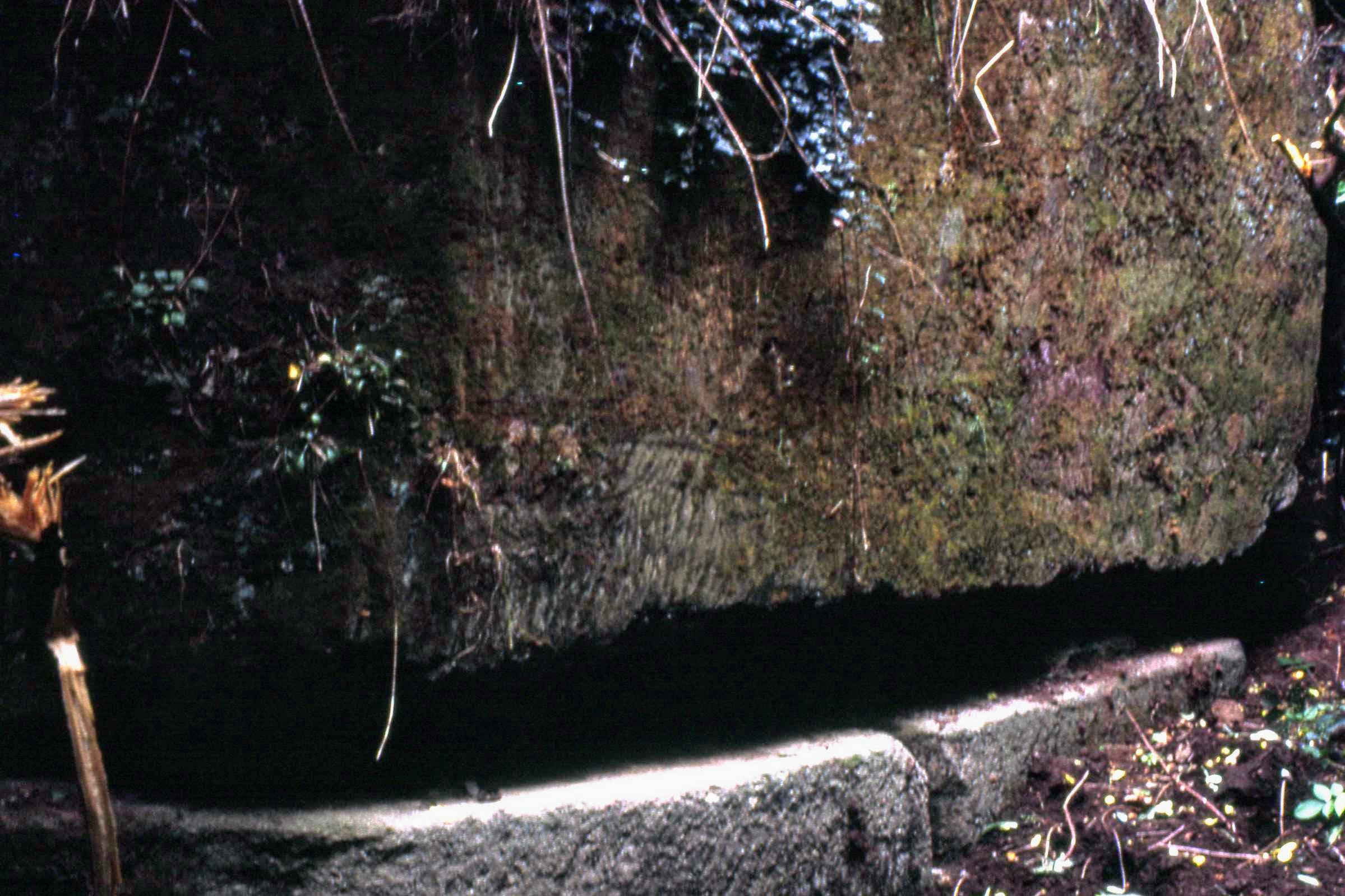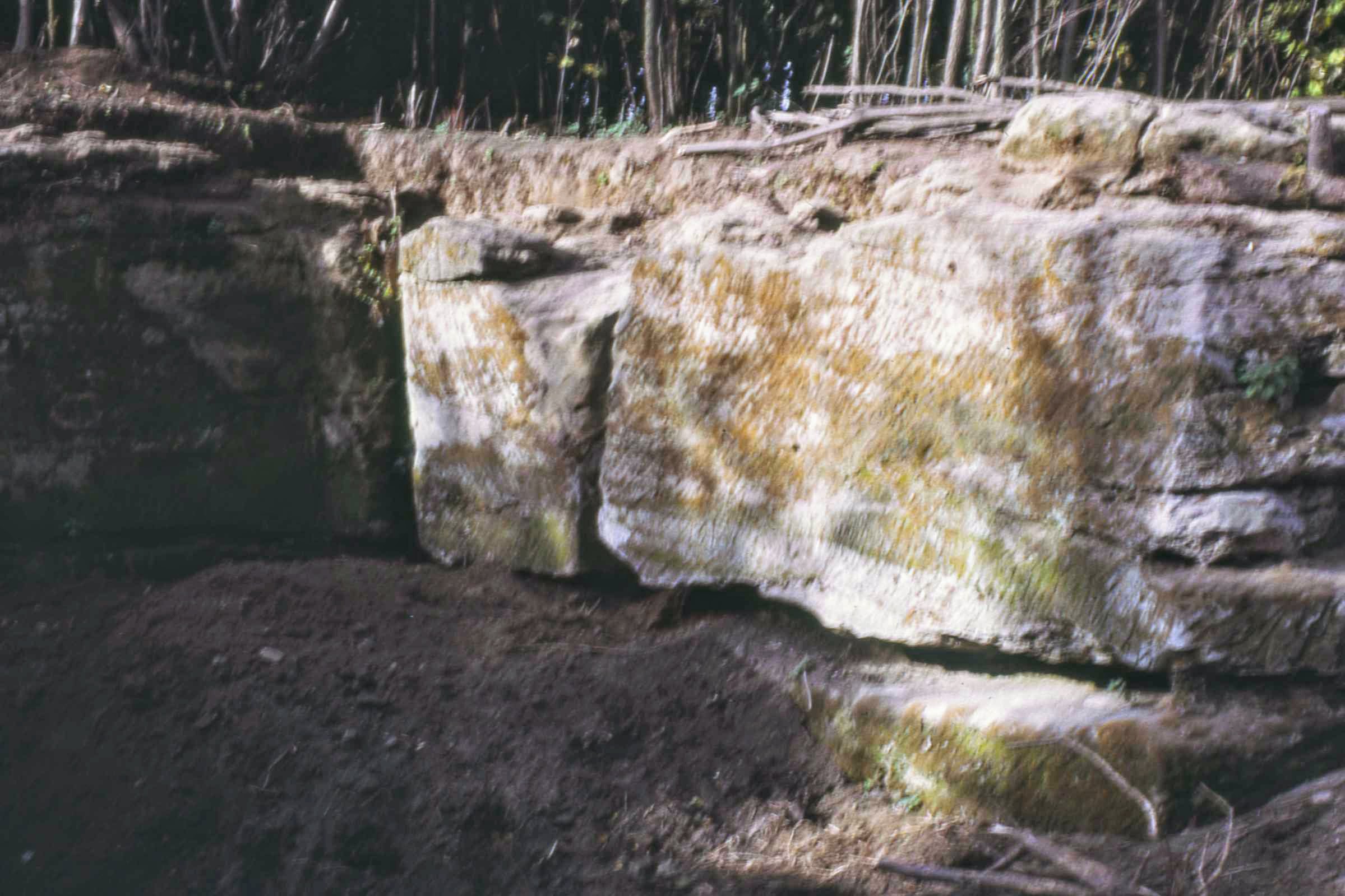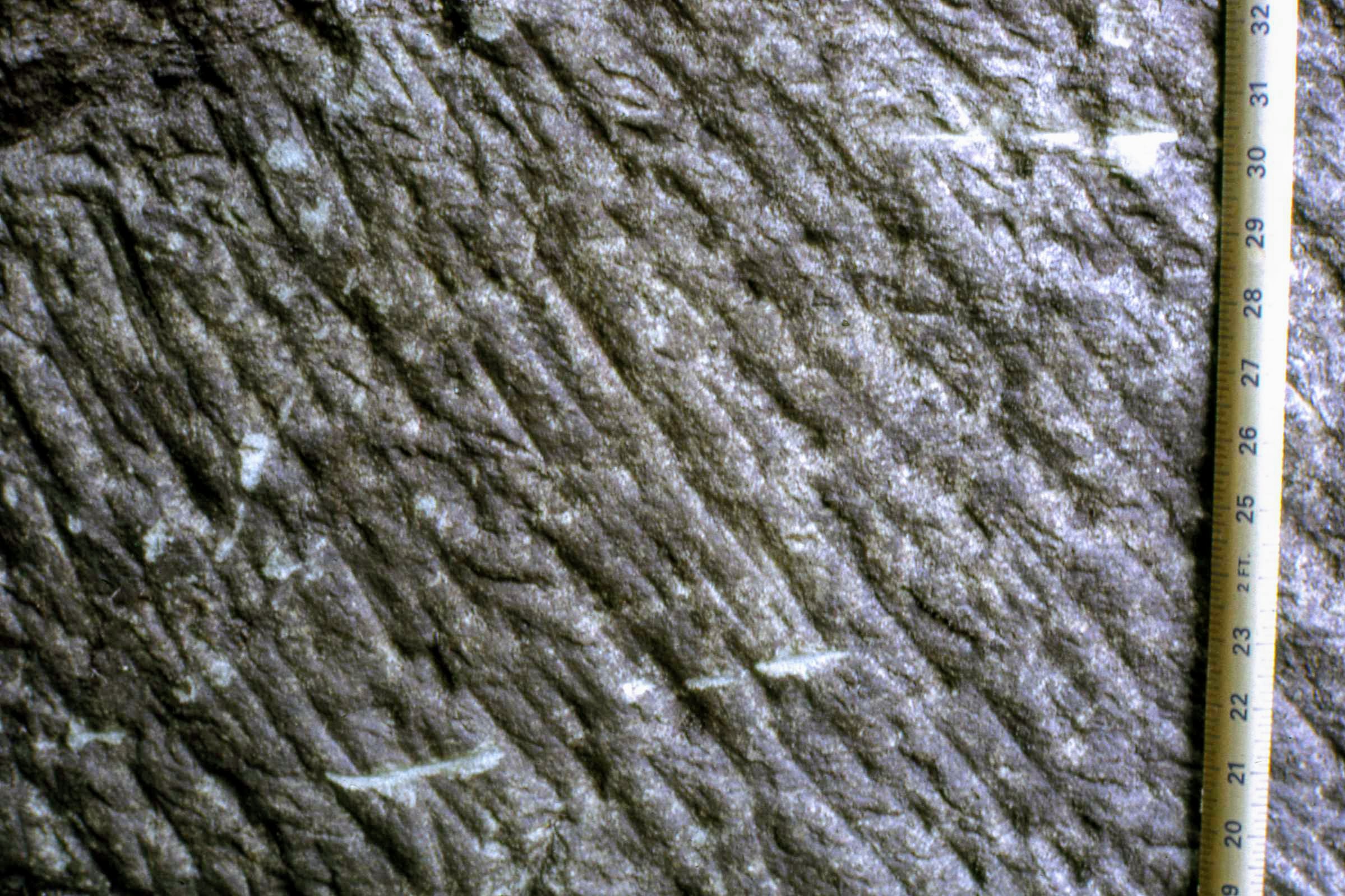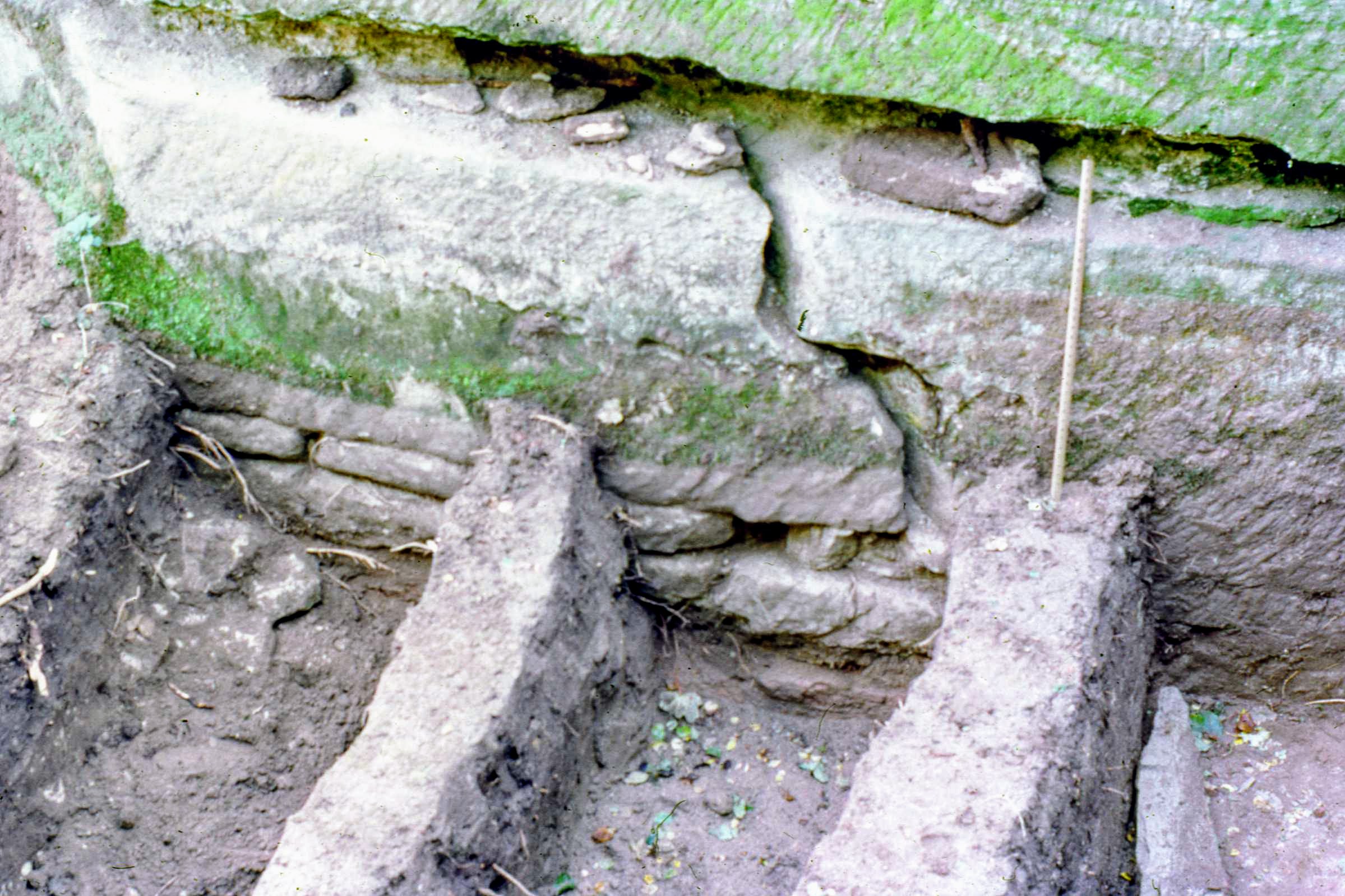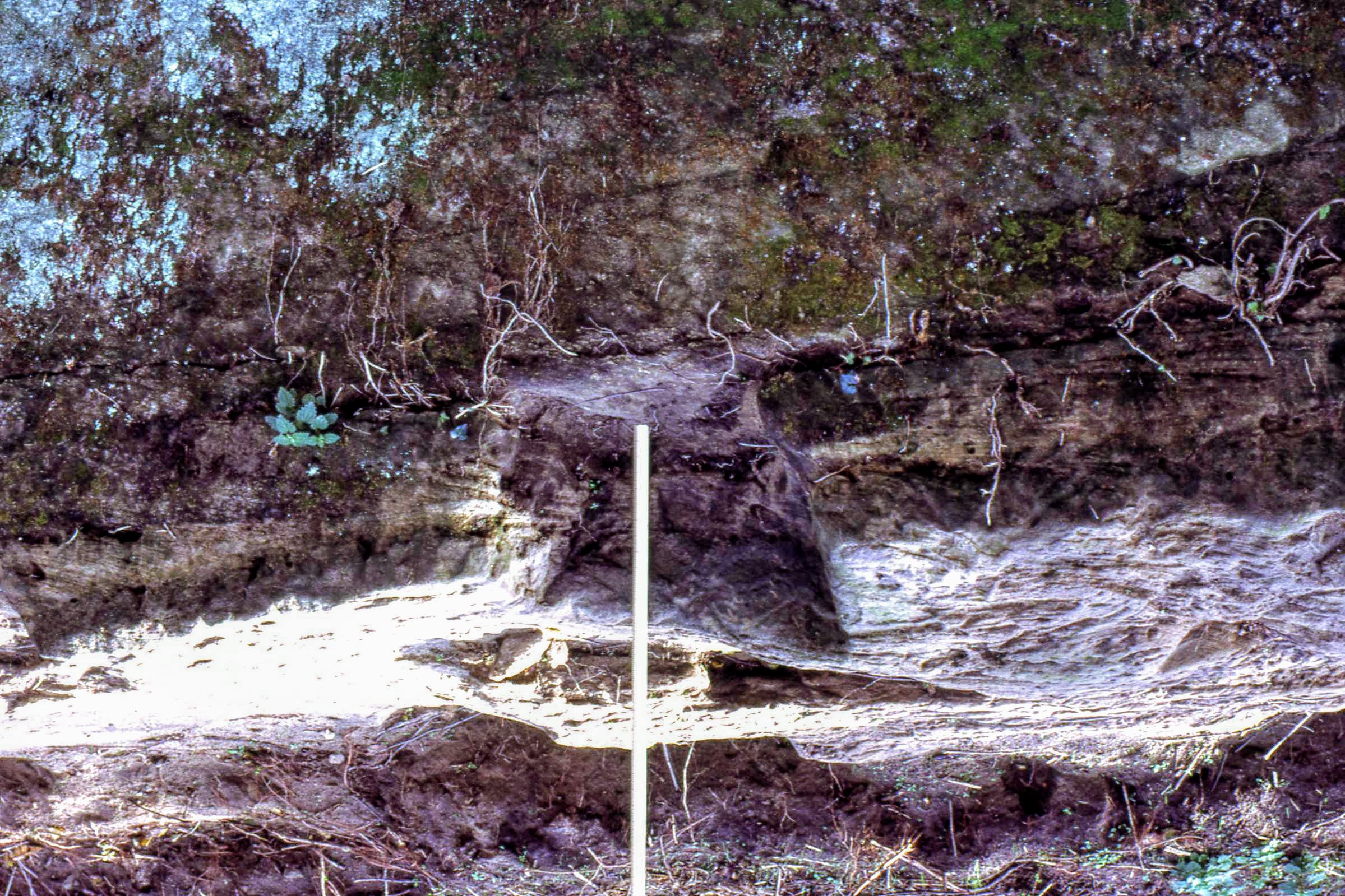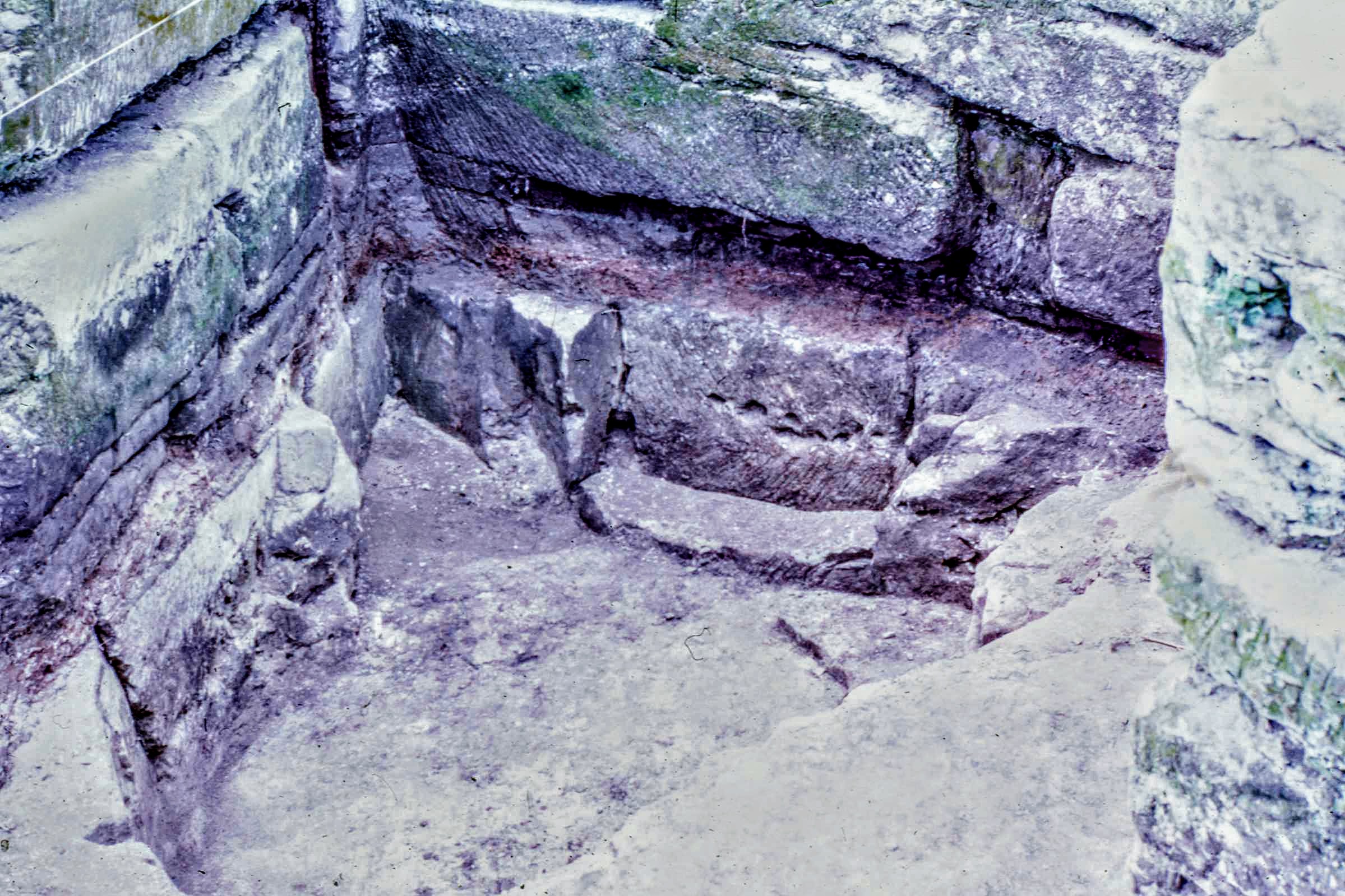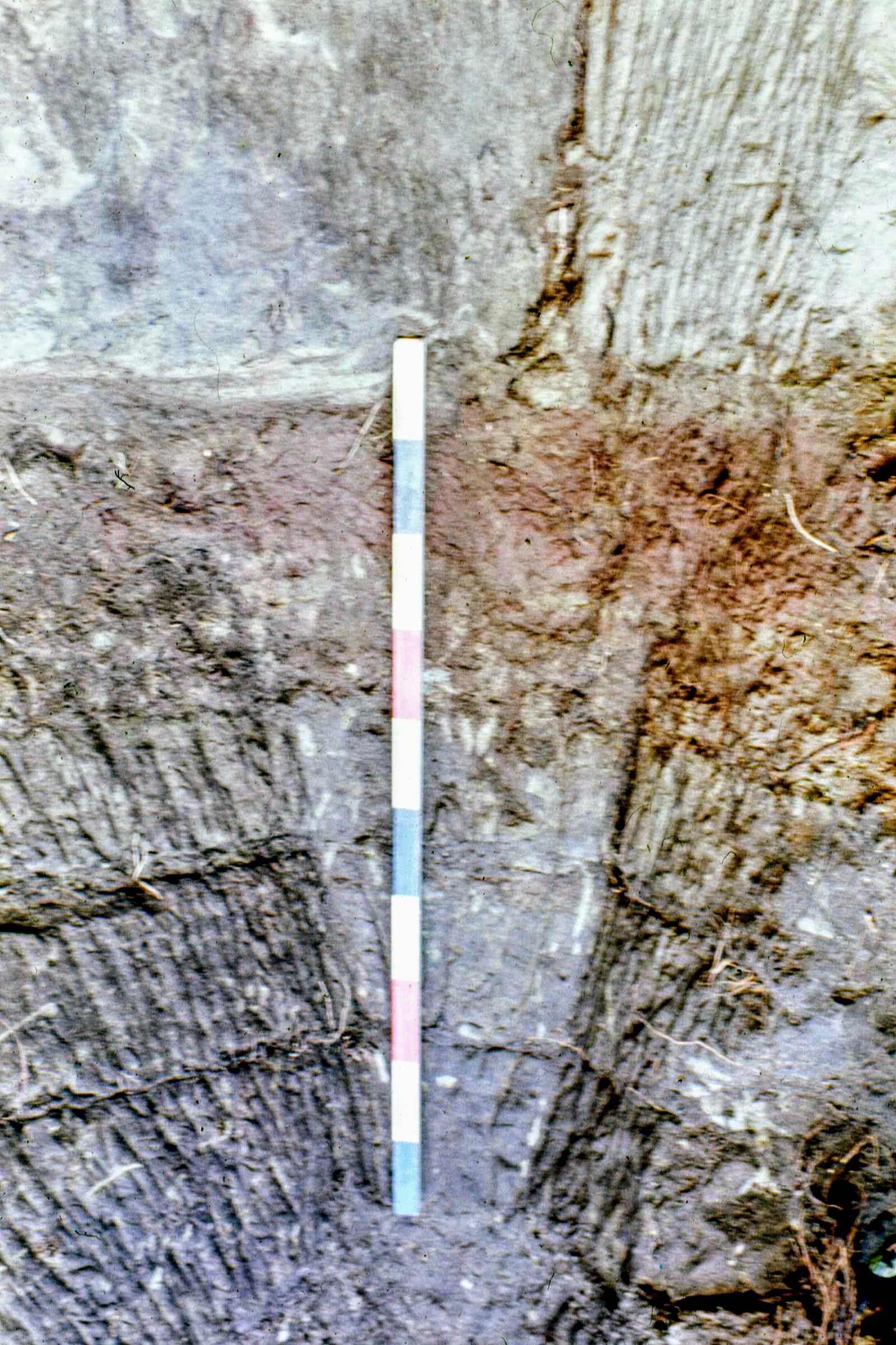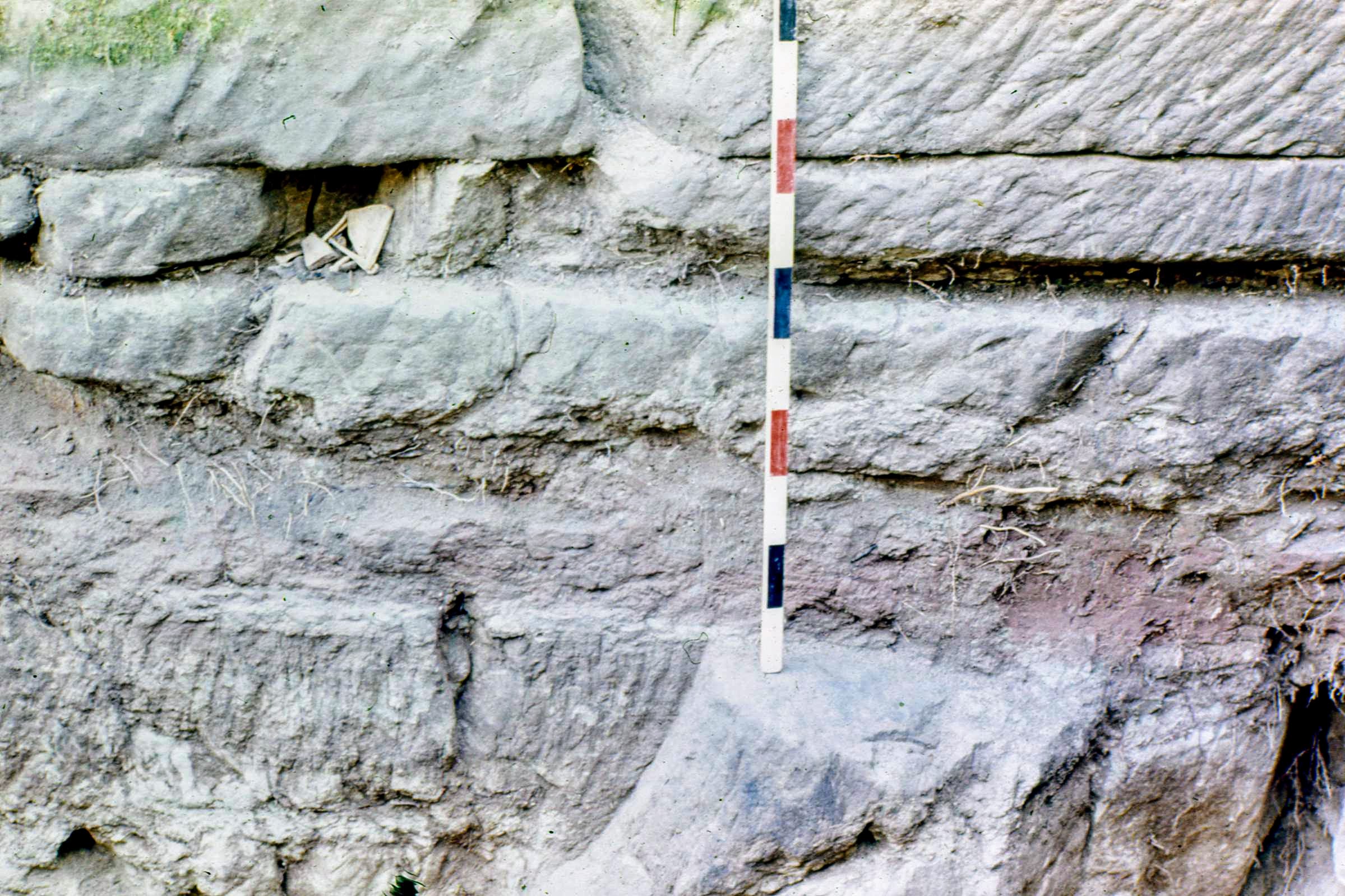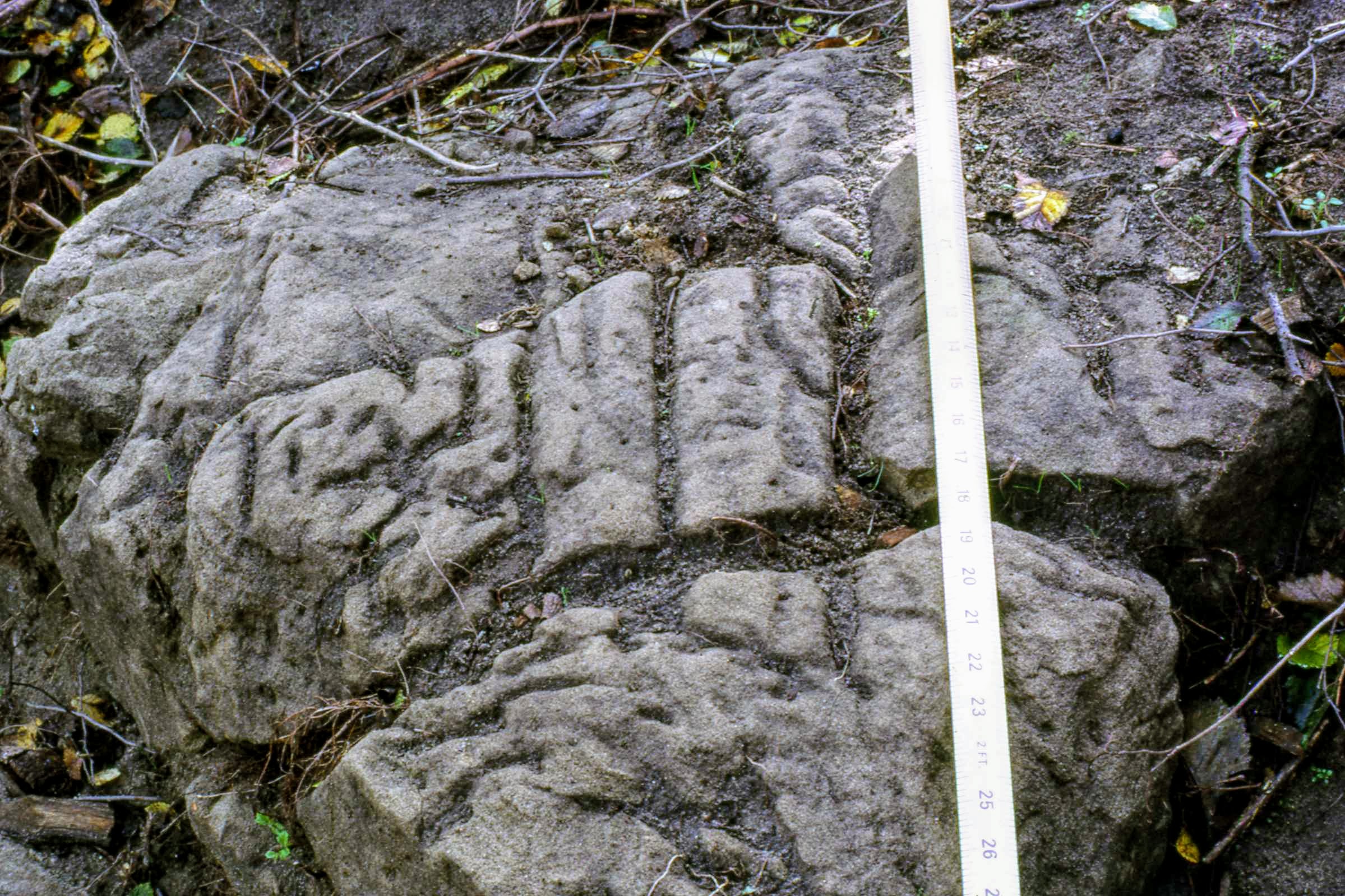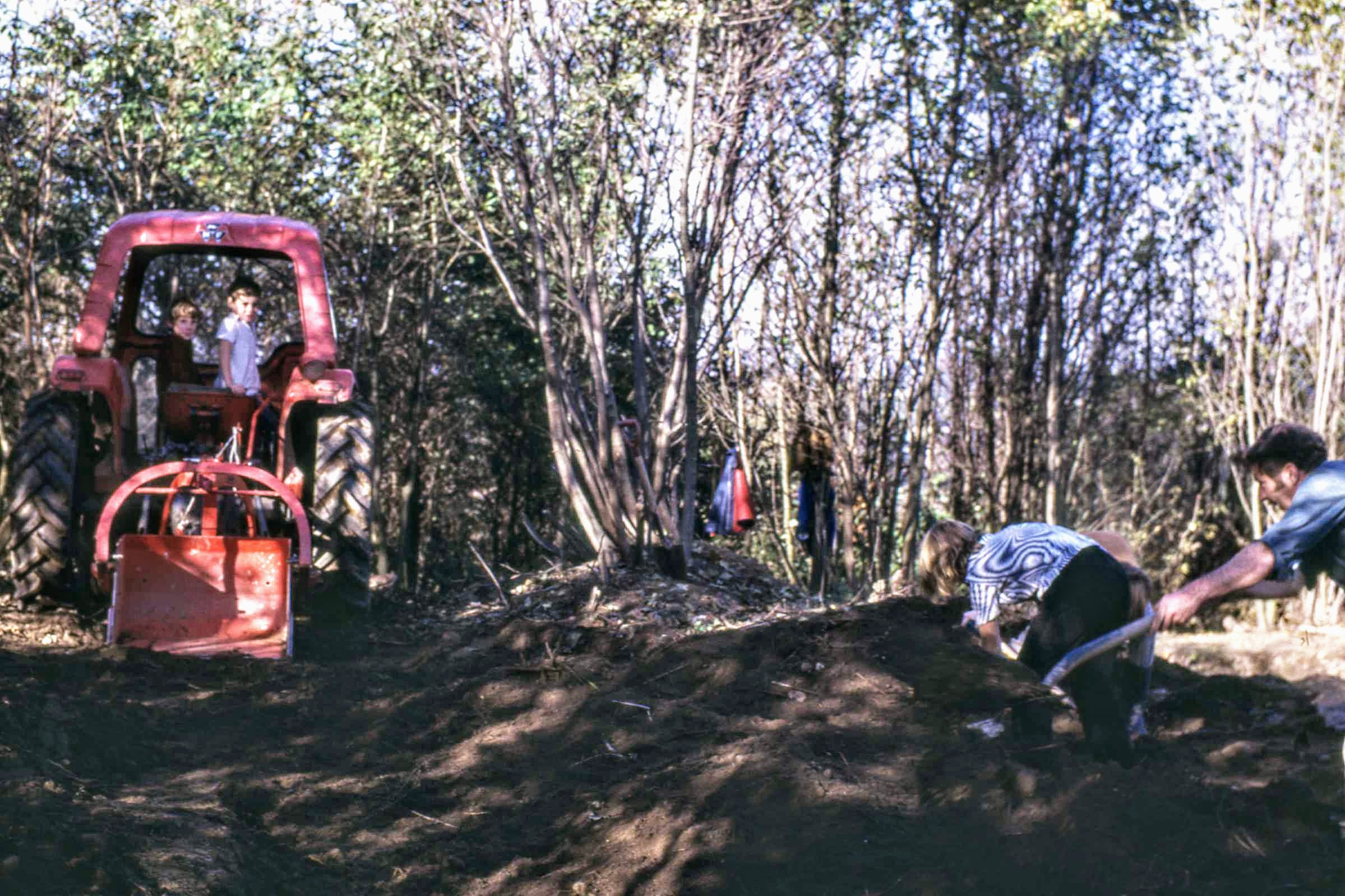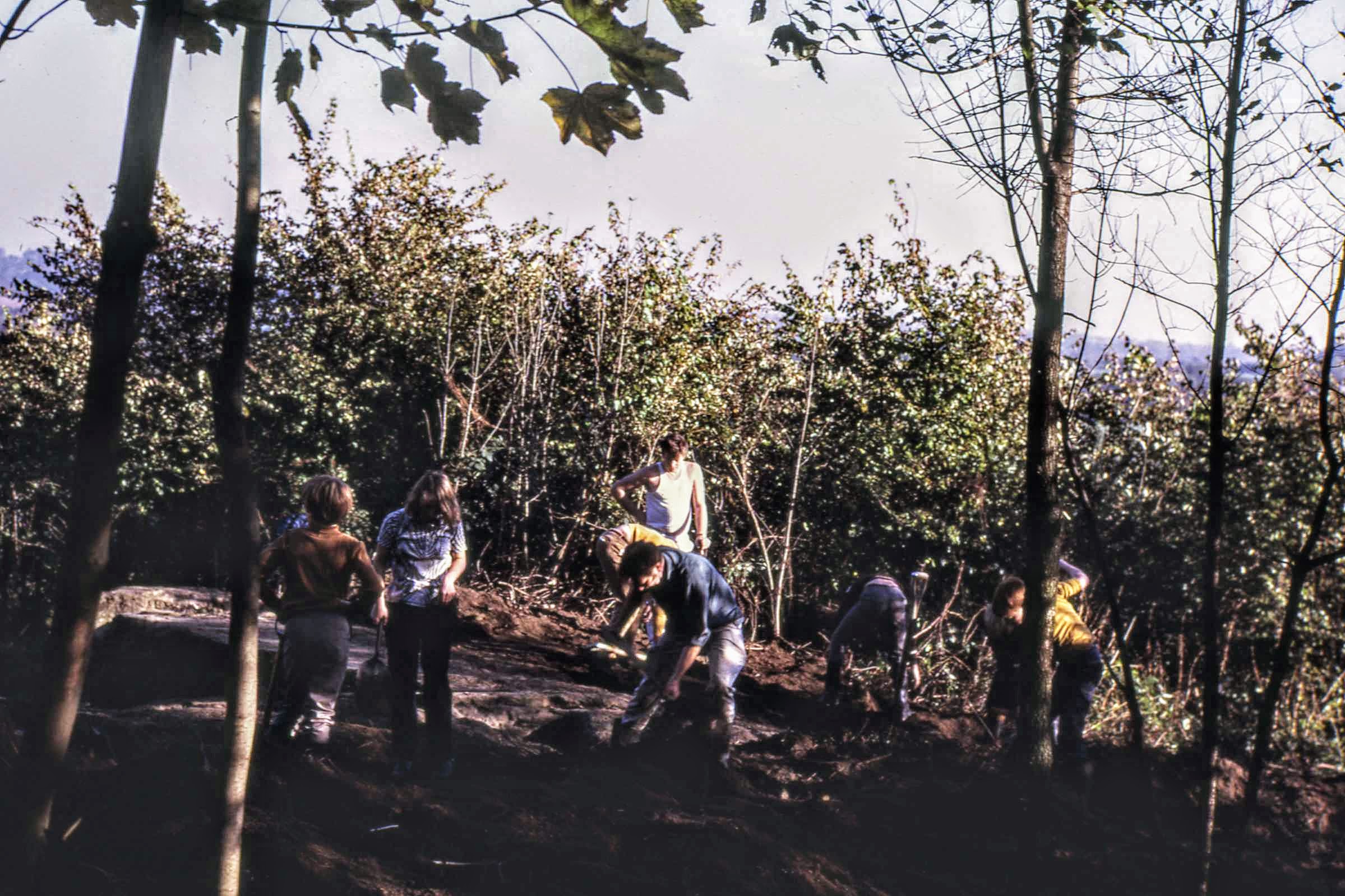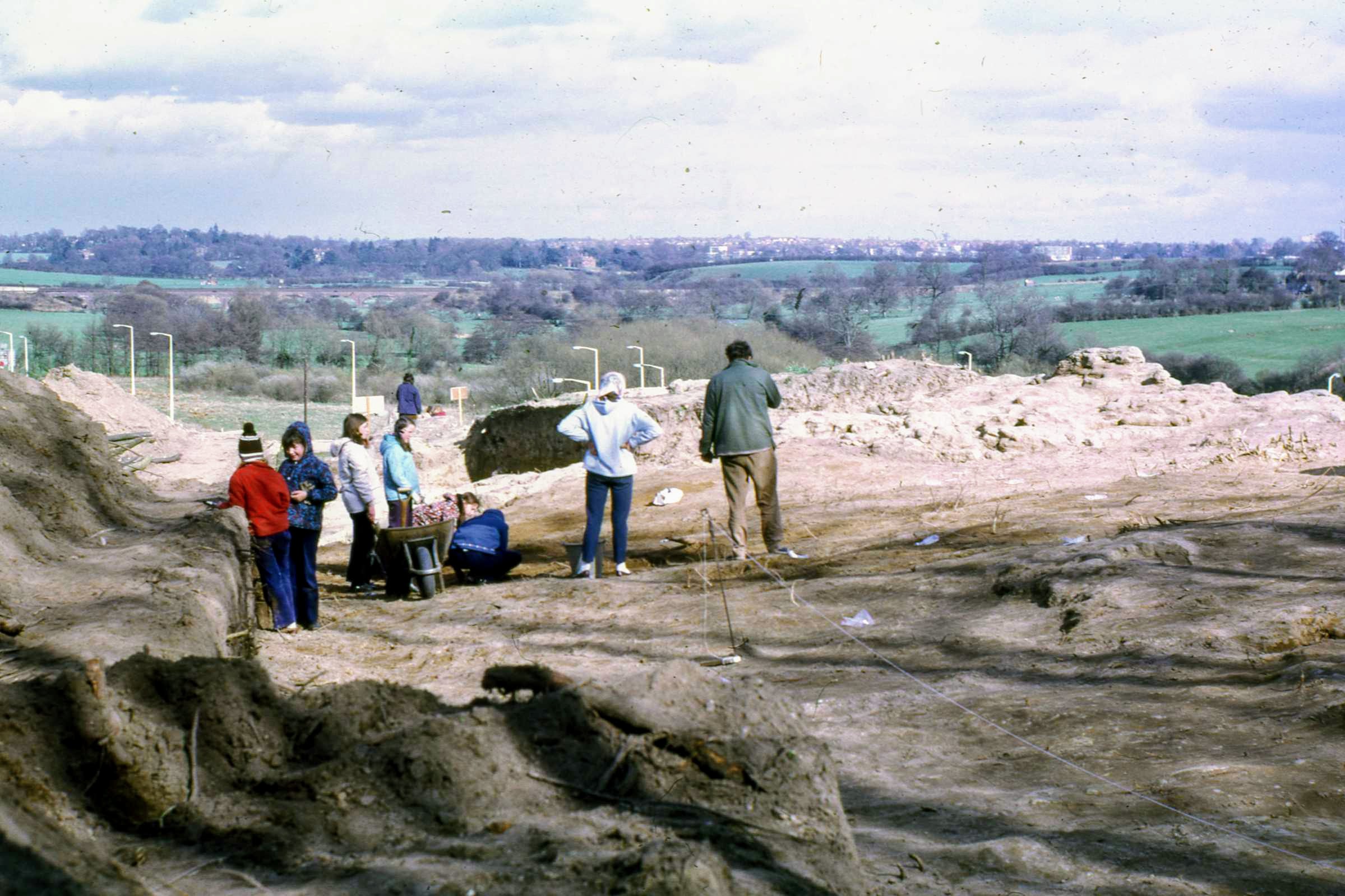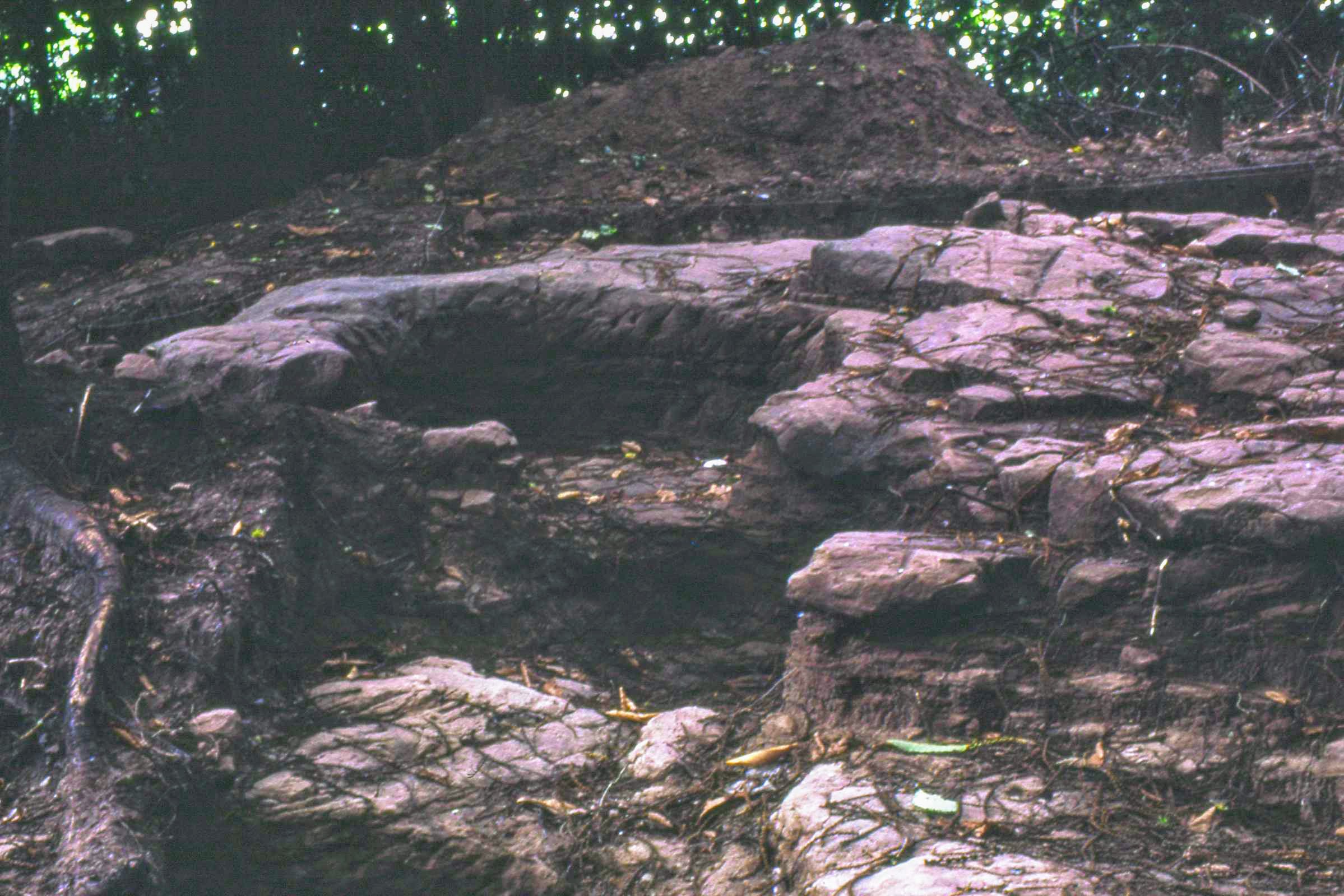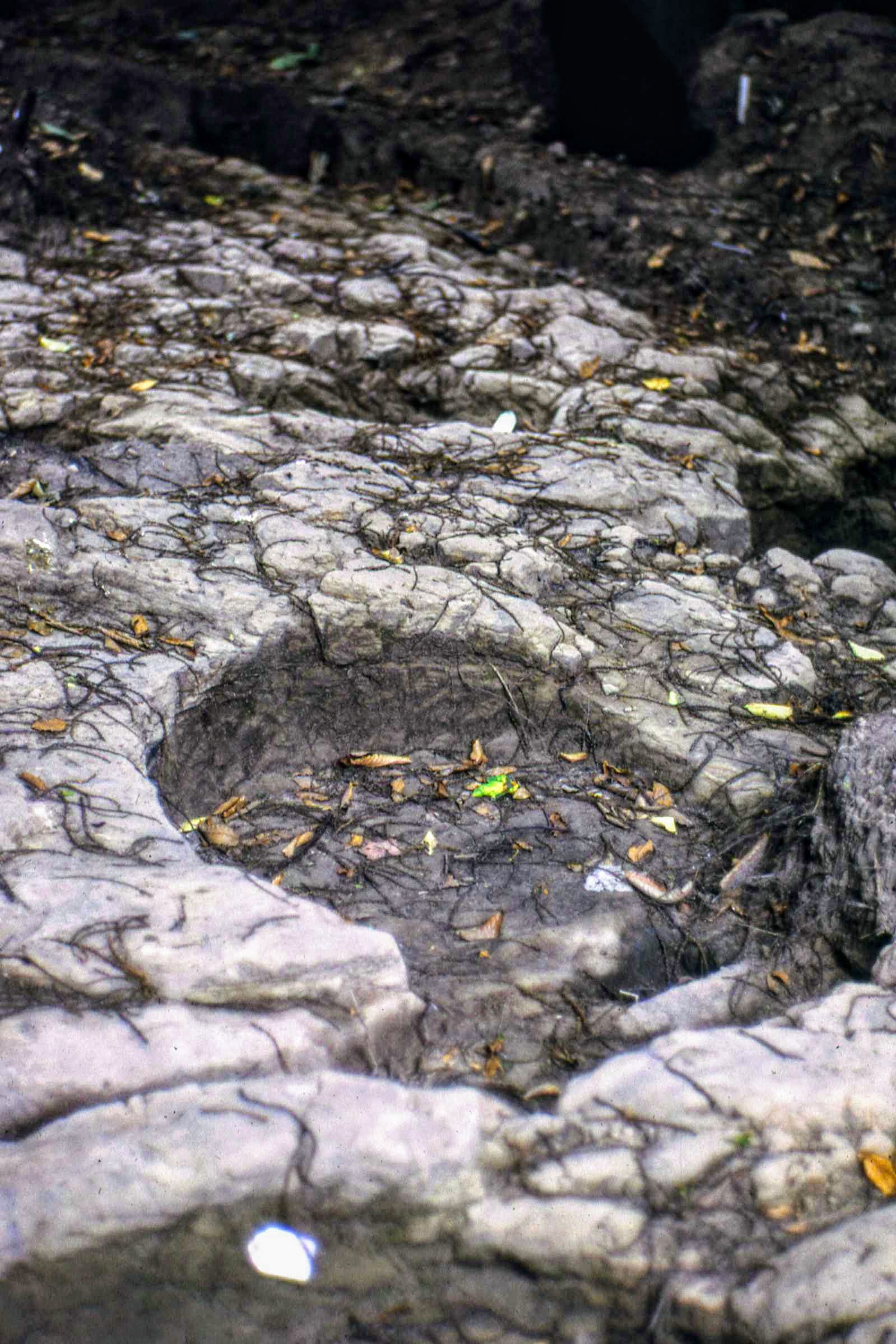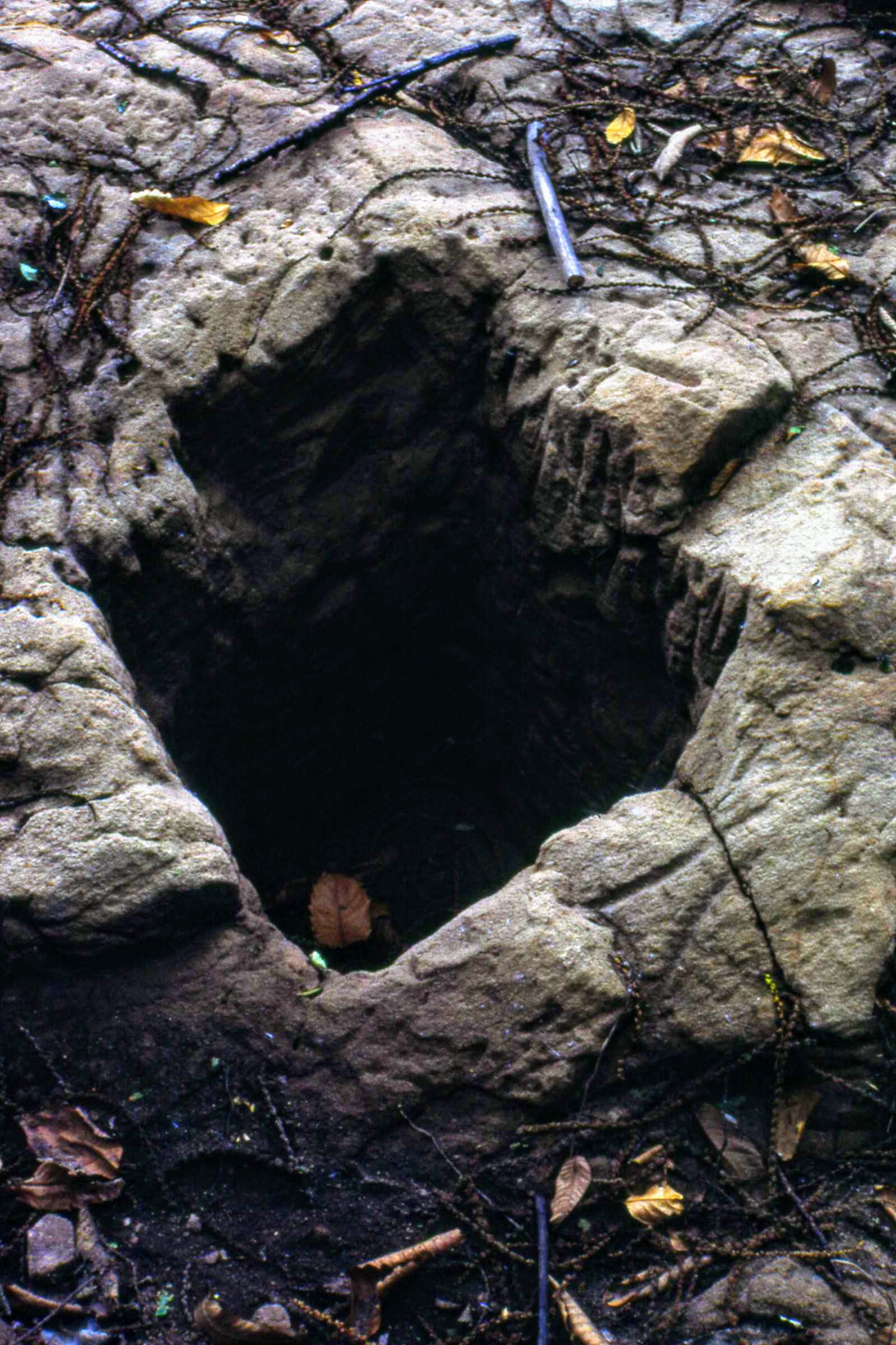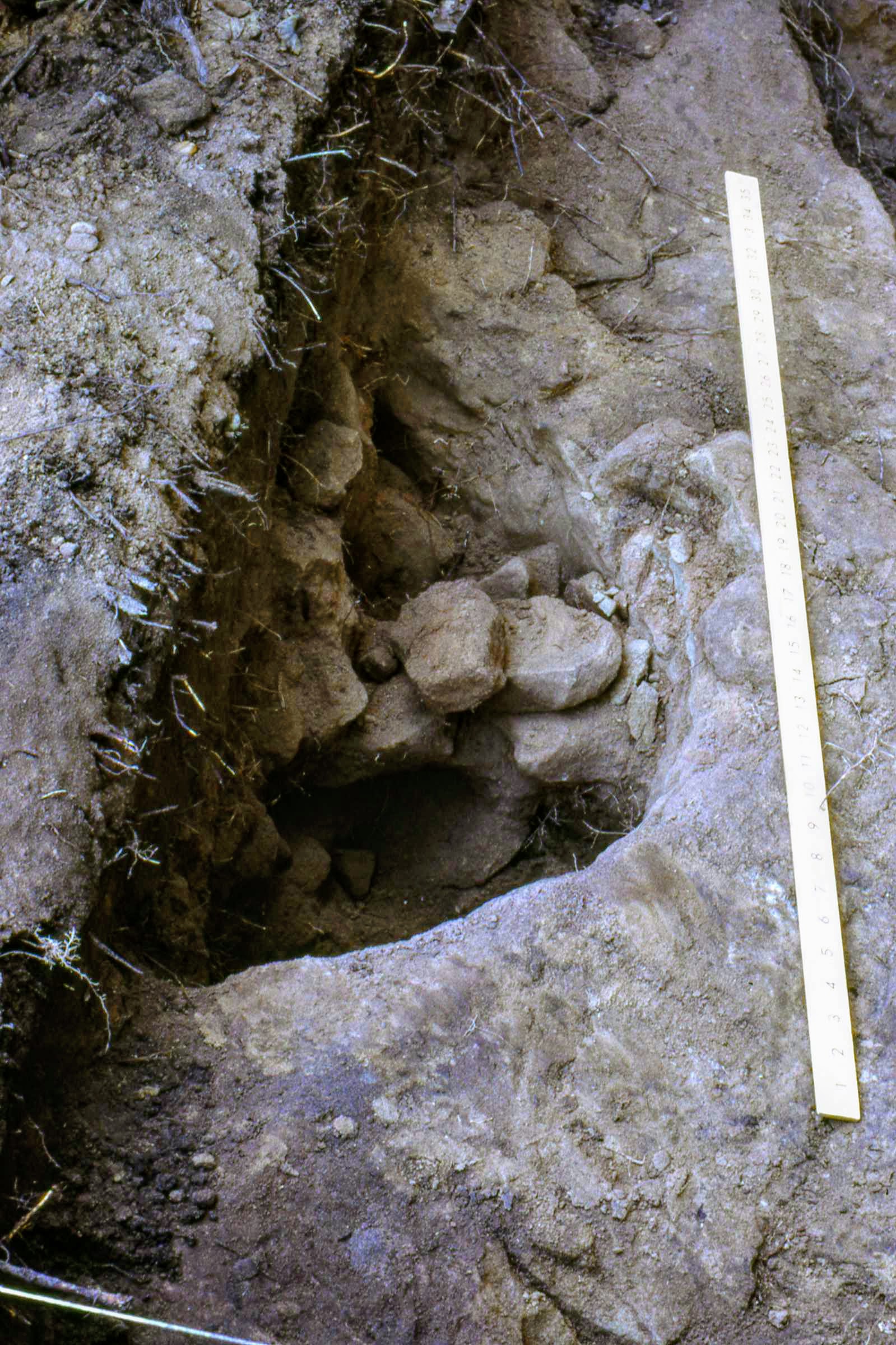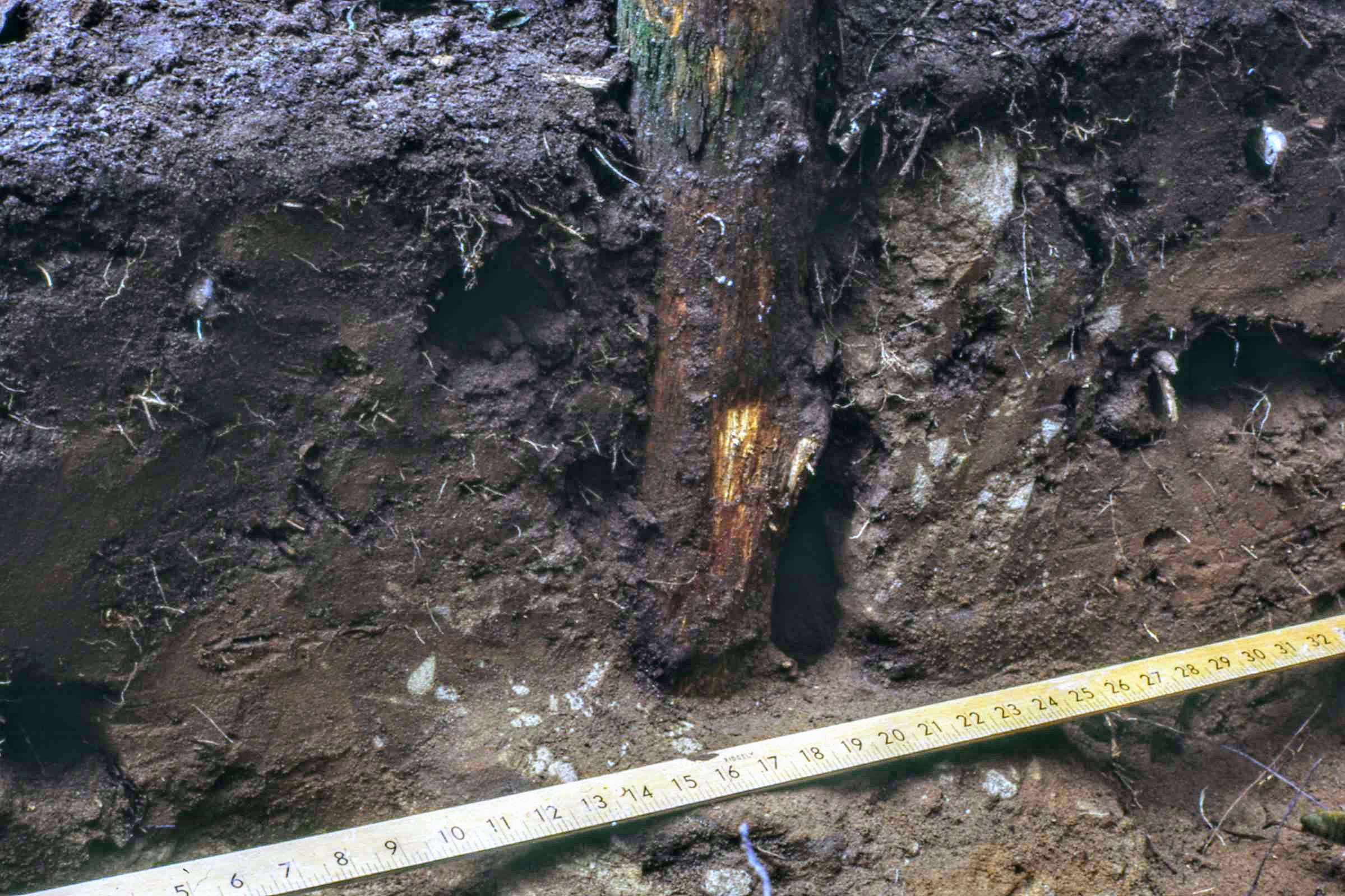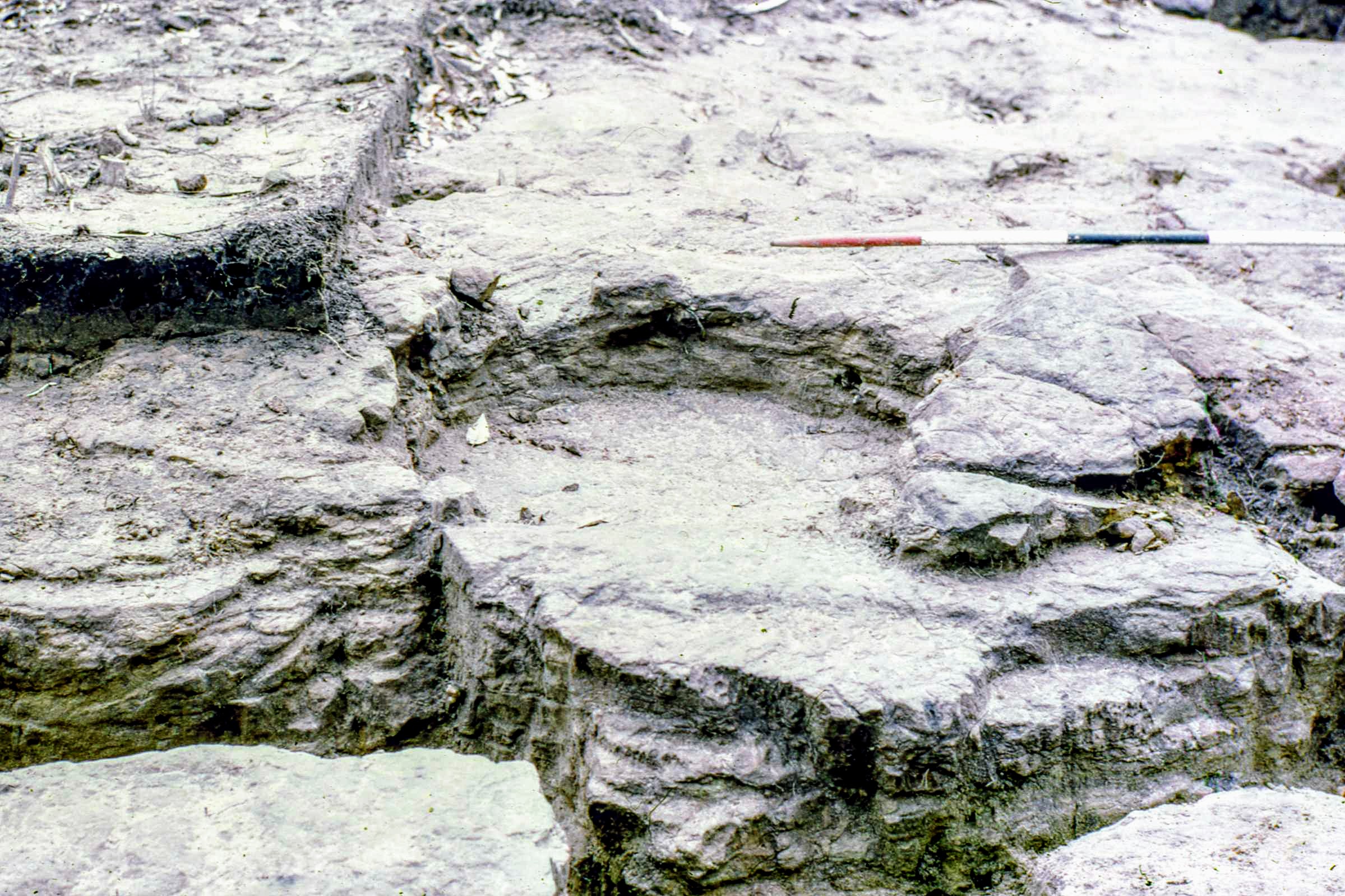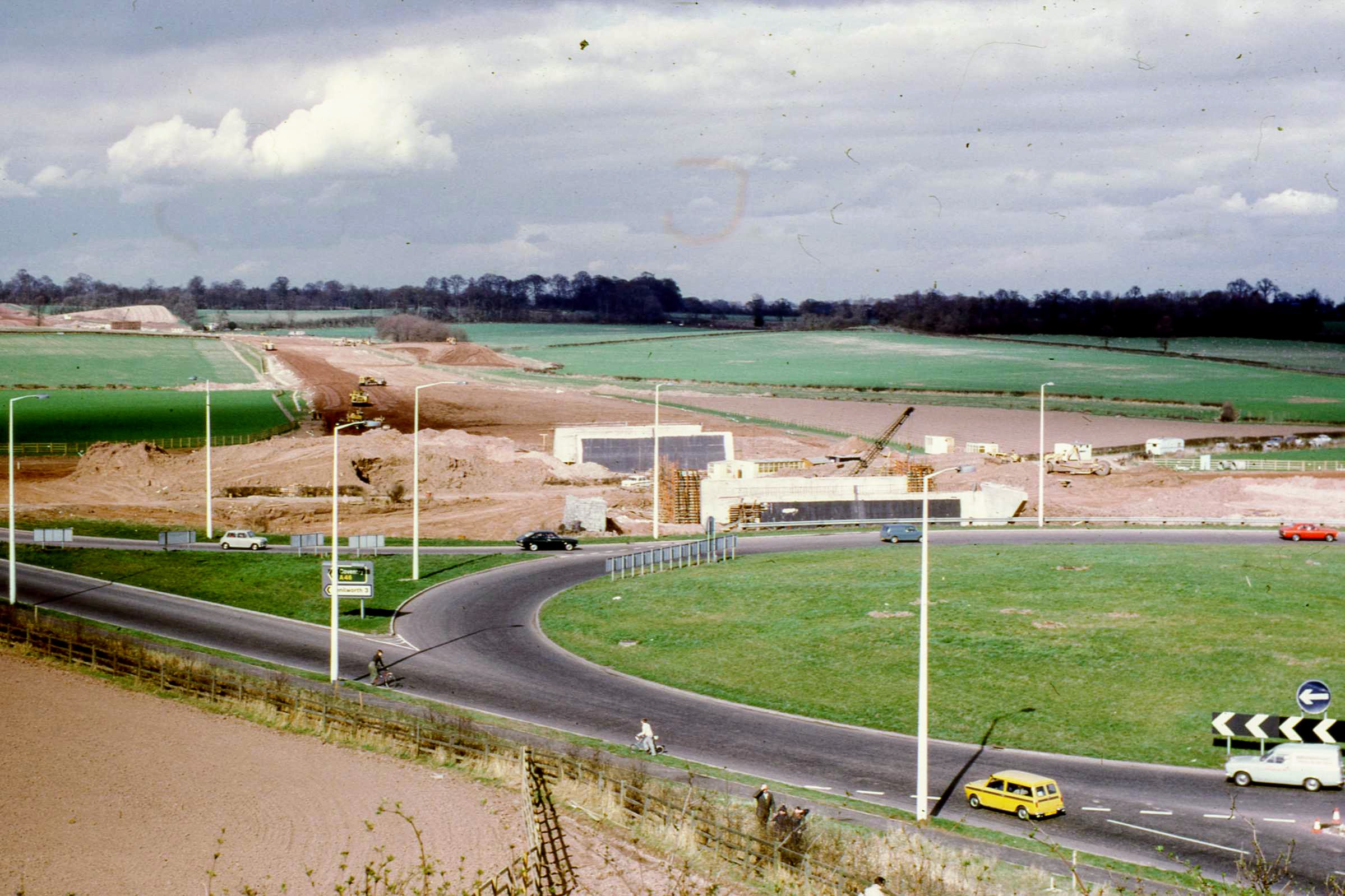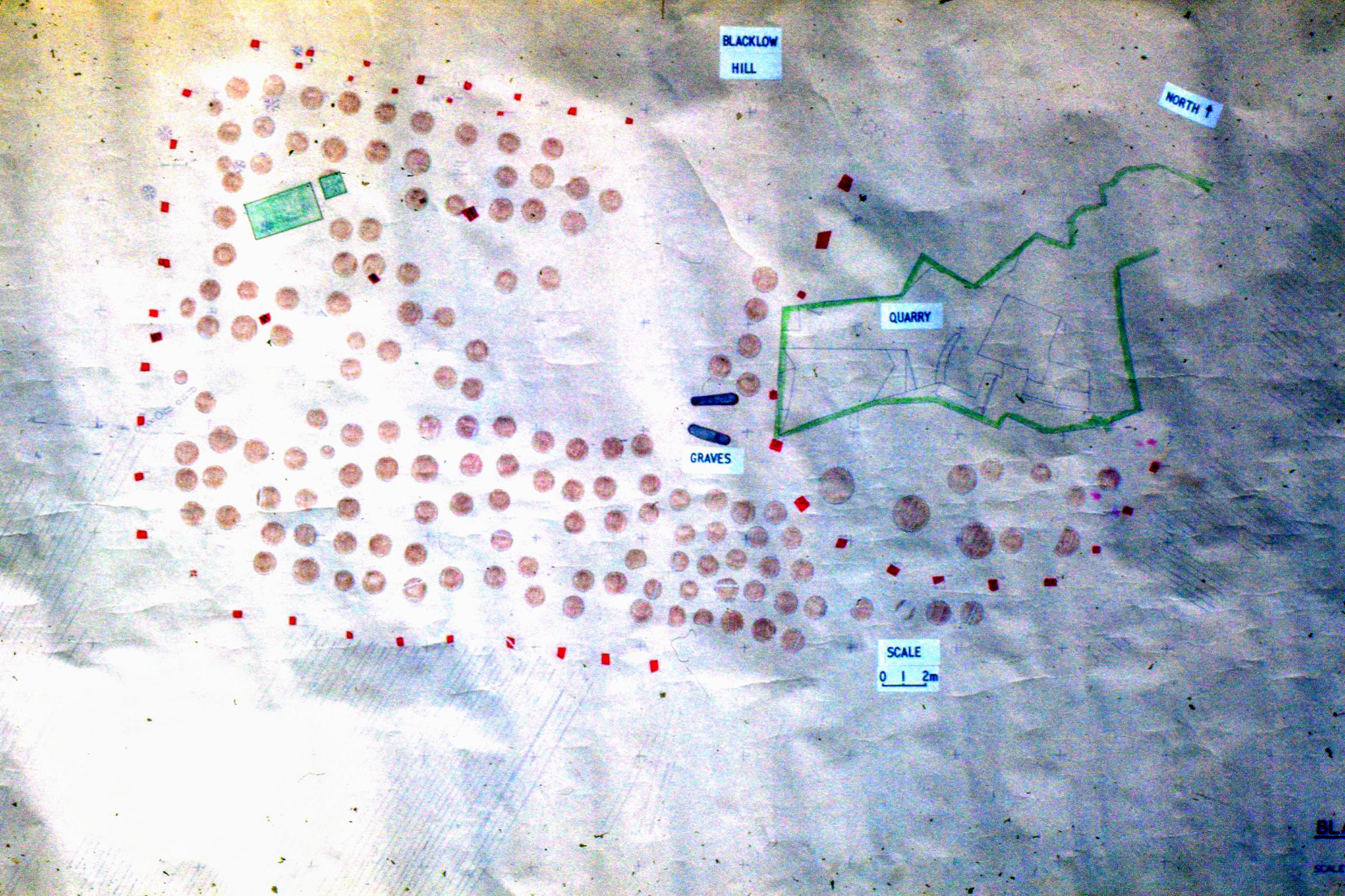When we left the story in Part 2 of this mini-series, the dig team were coming to terms with the scale and importance of the discoveries on Blacklow Hill, and perhaps not now viewing it to be quite such an archeæological backwater after all.
Harry Sunley continues the story, in KHAS Newsletter 39 from June 1972:
“The mysteries of Blacklow Hill – continued
I had expected that by the time this instalment came to be written, the site would have been demolished, and that all would have been revealed. In fact this is not so. But to pick up the story where we left off, by the end of last year, we were perhaps feeling a bit frustrated. Whatever we started, and started meant clearing trees, tree roots and topsoil, we found that by the next weekend, the few full time workers on the site had finished it and so we started again.
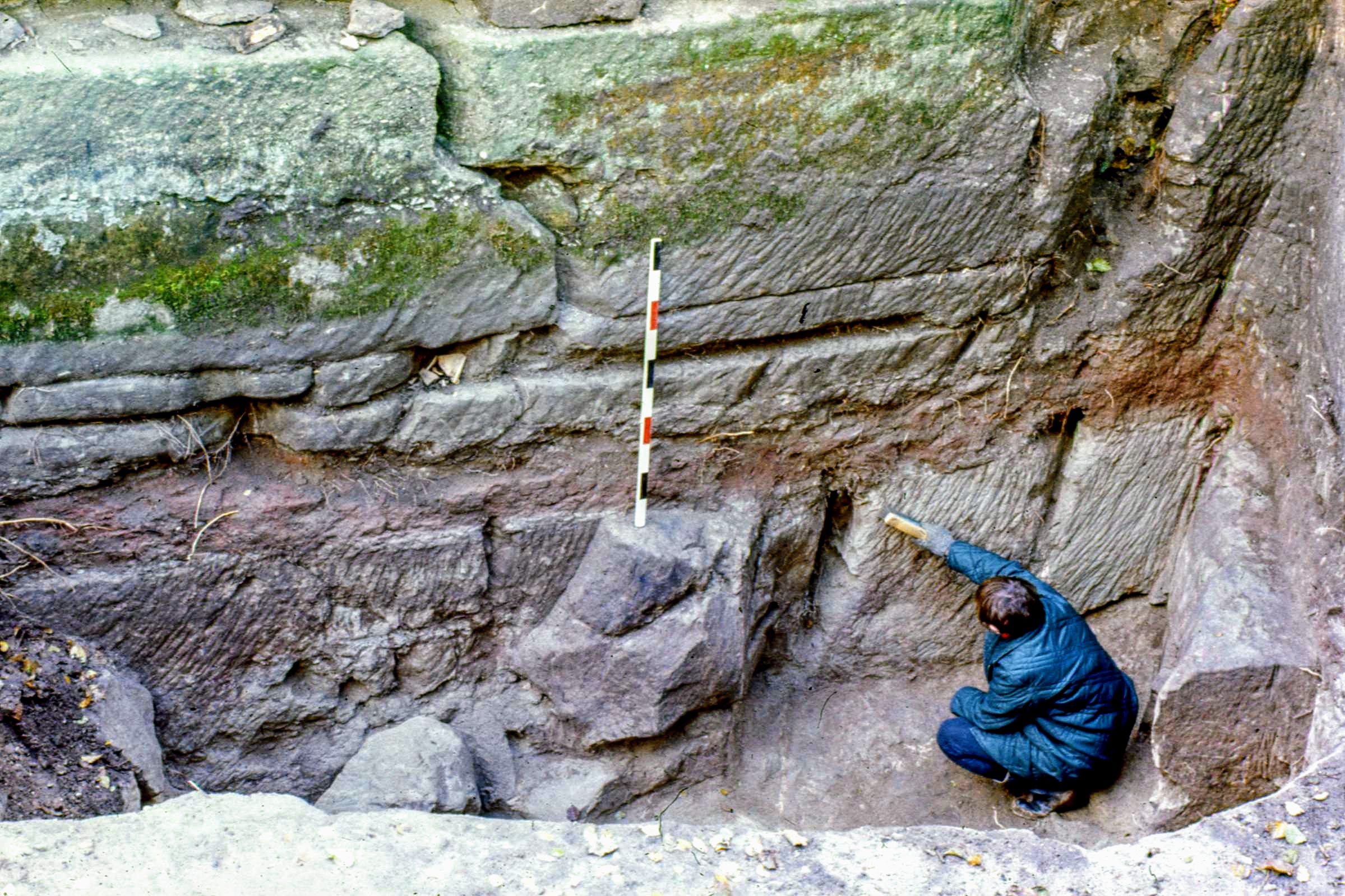
This was finally resolved by our allotting ourselves a significant patch away from the main working and for a number of weeks we had this entirely under our control. Having learnt at this time that the site was to go on for another six months, we were now able to start a recruiting exercise. Previously the site had always been going to go a month after the day you happened to be talking about it. Penny Scott did a fine poster that was put up in the Library, and Rene Potter spoke to the KWN. The result of this was an influx of volunteers, seldom less than 30 – 40 over a Sunday, and we really made some headway.
However, things were changing. The Department of the Environment granted money to the Warwickshire Museum, thus allowing them to mount a man-sized excavation. This meant, quite rightly, that our efforts would have to come directly under the control of the Site Director. For a week or so, we were left much as we were, but gradually we merged in with other volunteers and the professionals. We therefore, to a large extent lost our identity, and interest flagged. Some of us still go up to the site and do some work but the site no longer depends virtually on our effort alone.
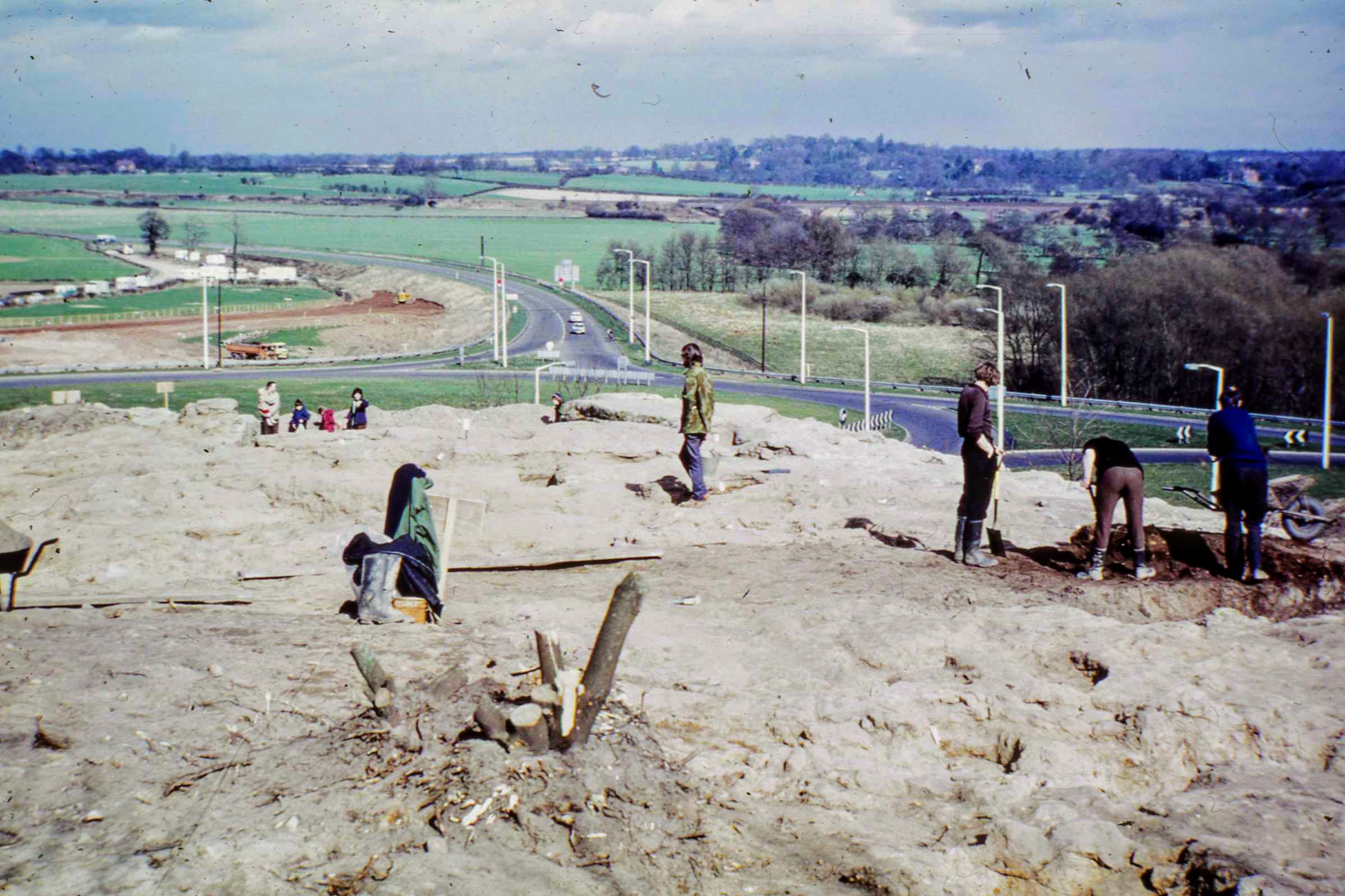
Without blowing our trumpets too hard, we did well. Except for the initial finding of the circular pits by the museum diggers, we found practically everything else; the quarry; the post holes; the larger circular pits; the Saxon burials; the entrance to the site and the beam slots that run at a sloping angle around the site. We did not necessarily recognise the significance of all these, it must be admitted – but then nor did anyone else. It was only when the large scale operation was mounted did anything like a picture emerge.
So what is it all? The official explanation at present is that it is a Saxon Sacred or Ceremonial Site. There is a school of thought, however, that it may have had earlier origins, I fear that we must wait and see. At least the mystery of the Quarry is explained; it is a quarry despite theories on it varying from a Mesolithic Temple, a Roman Water Tank, a medieval building and a Rocket Launching Site. It is merely a twelfth century quarry – determined from stratified pottery – which has cut into the earlier site; we should set ourselves the task over the summer of determining where the stone was used – both Penny Scott and I have made casts of the tool marks.
I would like to take this opportunity of thanking those who helped in this enterprise which turned out to be really worth-while. Far from being banished to Leek Wootton, as I said in my previous notes, we have helped to put Leek Wootton on the archæological map.
A final point, the future of the site is uncertain as the road engineers are hoping to avoid touching the main part of it by making a steeper escarpment. If this comes off, the site will be saved but probably only by covering it over again to avoid it weathering away.
H L G S 12.5.72.”
Before the dig concluded the dig team captured a remarkable colour photographic record of the finds that were uncovered during 1971 – 1972, which are now published here, for the first time in their entirety, in the following slideshow:
(Note: you can use the arrows to skip forwards or backwards in the slideshow, or click the dots to pause the slideshow and select an individual photo to view)
And this is how the dig was brought to an end. The dig team awaited the publication of the official report and meanwhile the preservation of what had been uncovered at the site remained unresolved.
Next Week – The Blacklow Hill Dig – Part Four:
In Part Four of this ‘From the Archives’ feature we’ll skip forward to 1983 when, still awaiting the publication of that official report, Harry Sunley takes matters into his own hands to summarise the dig and tells us what happened to the site after the road builders’ bulldozers moved in.
